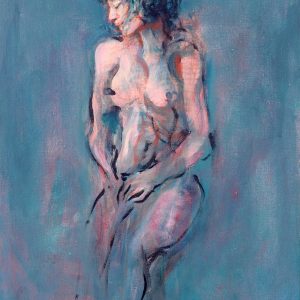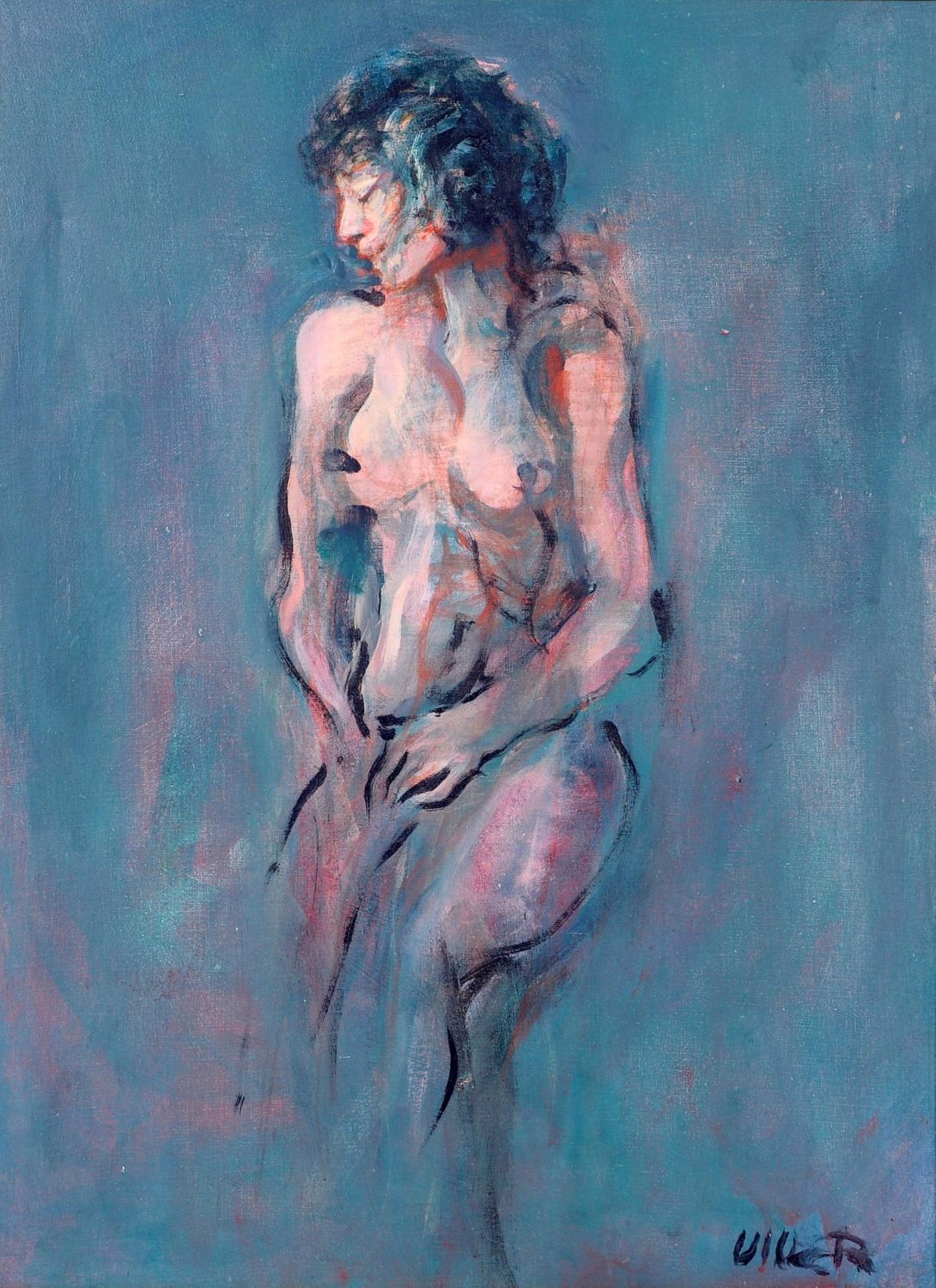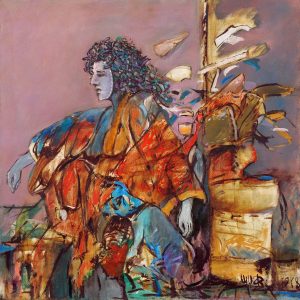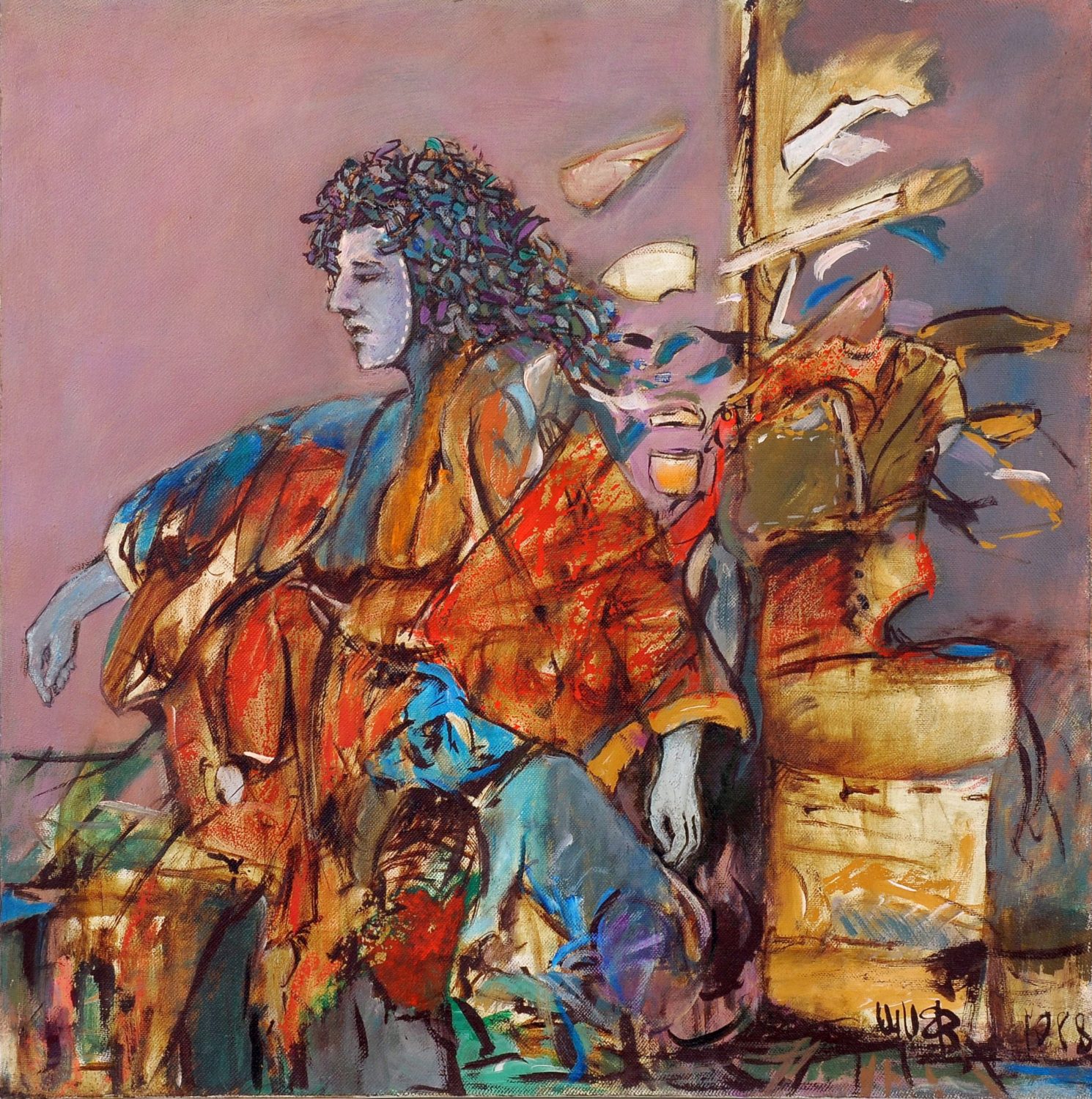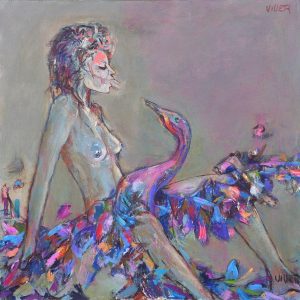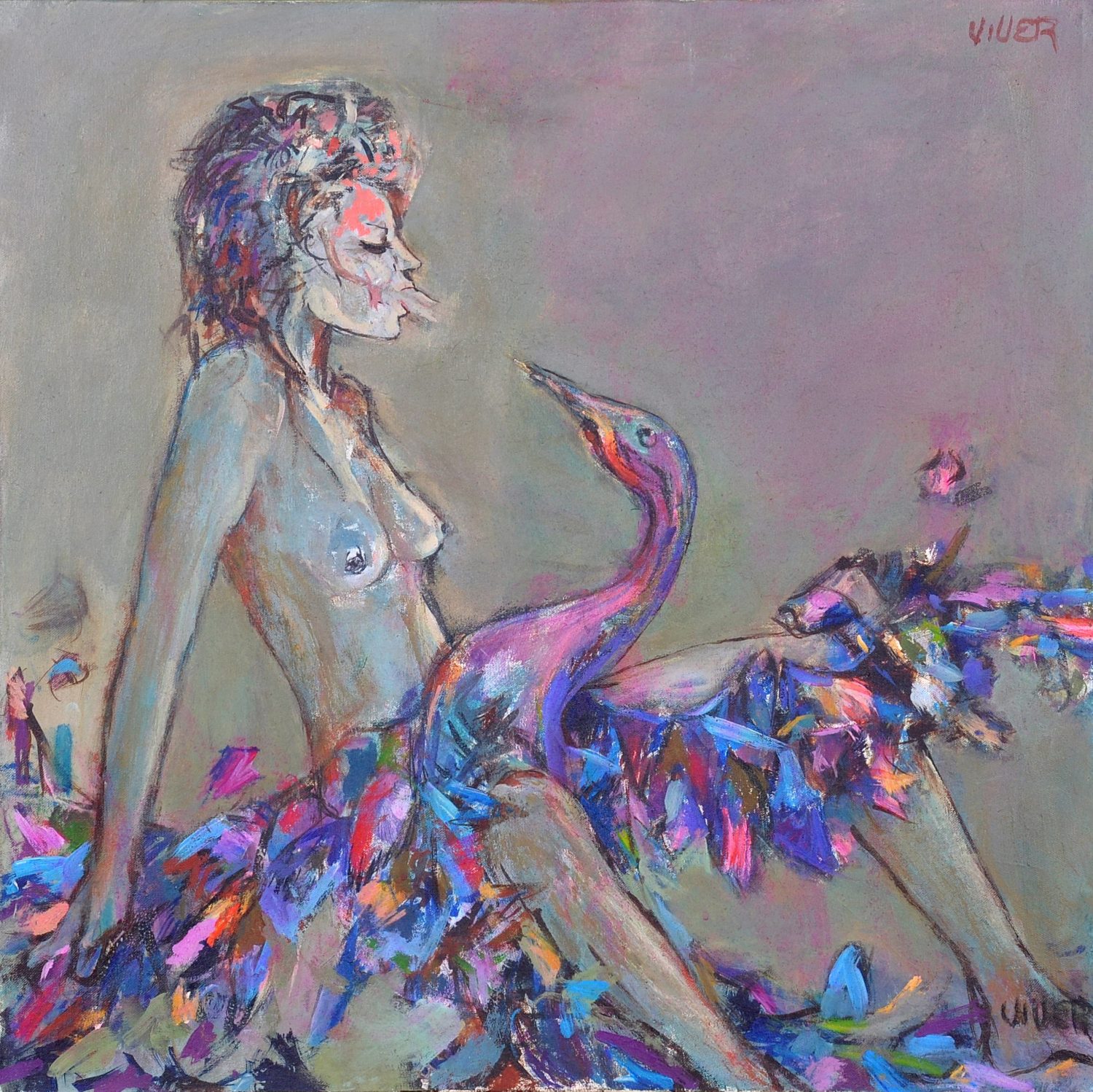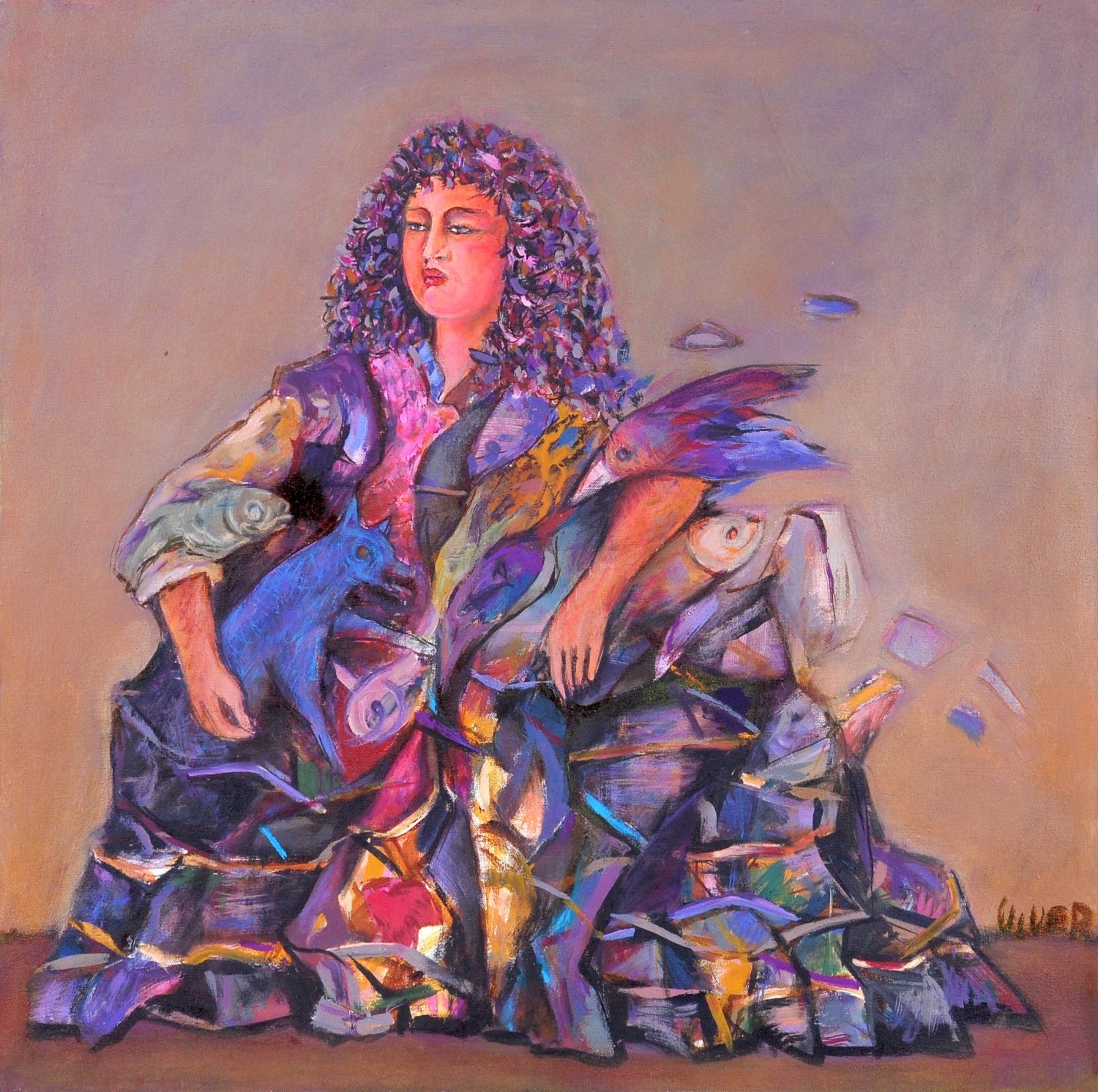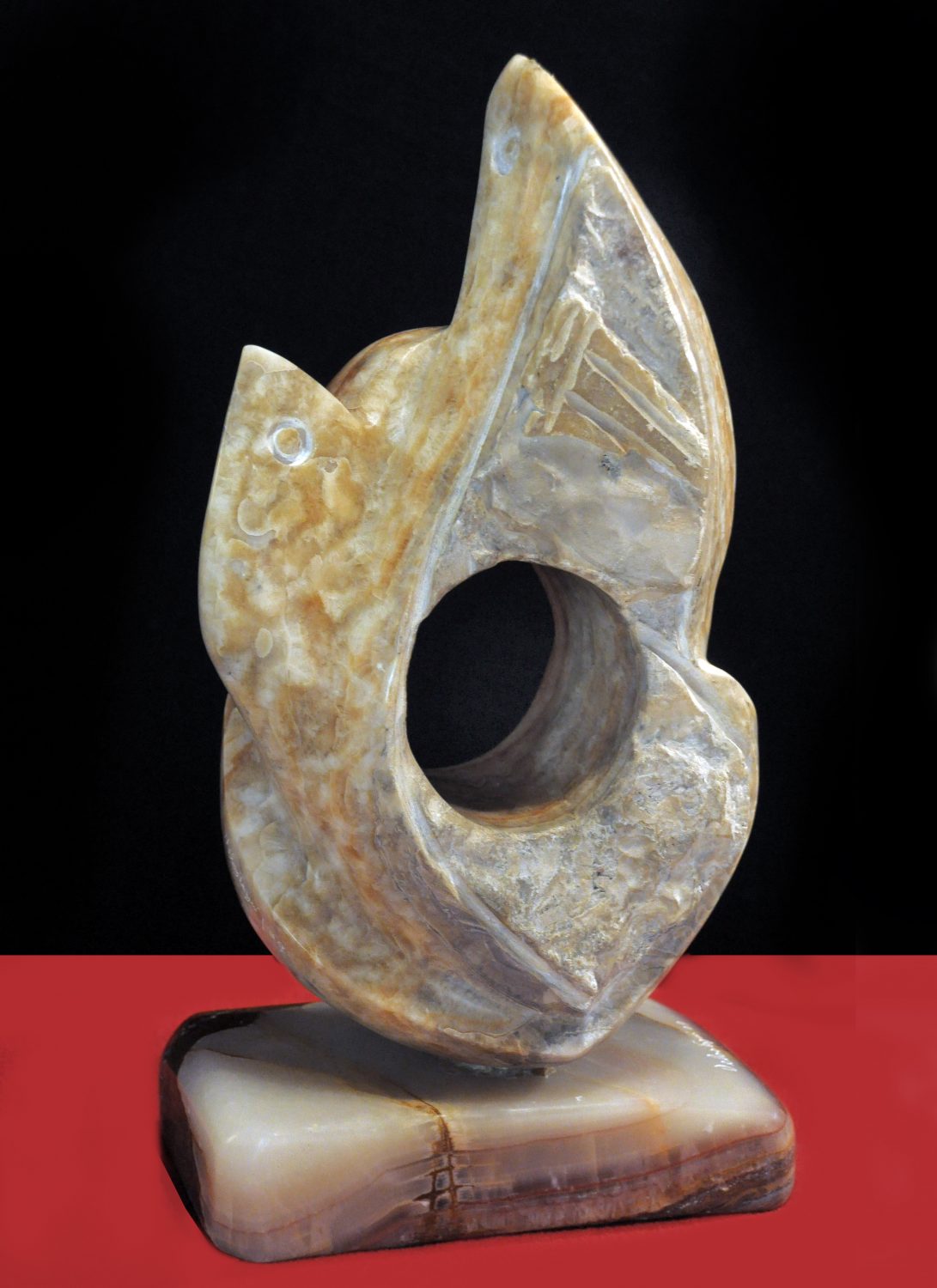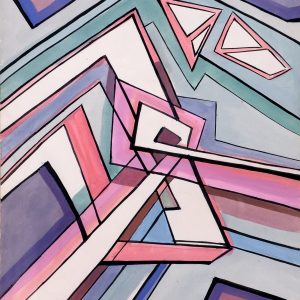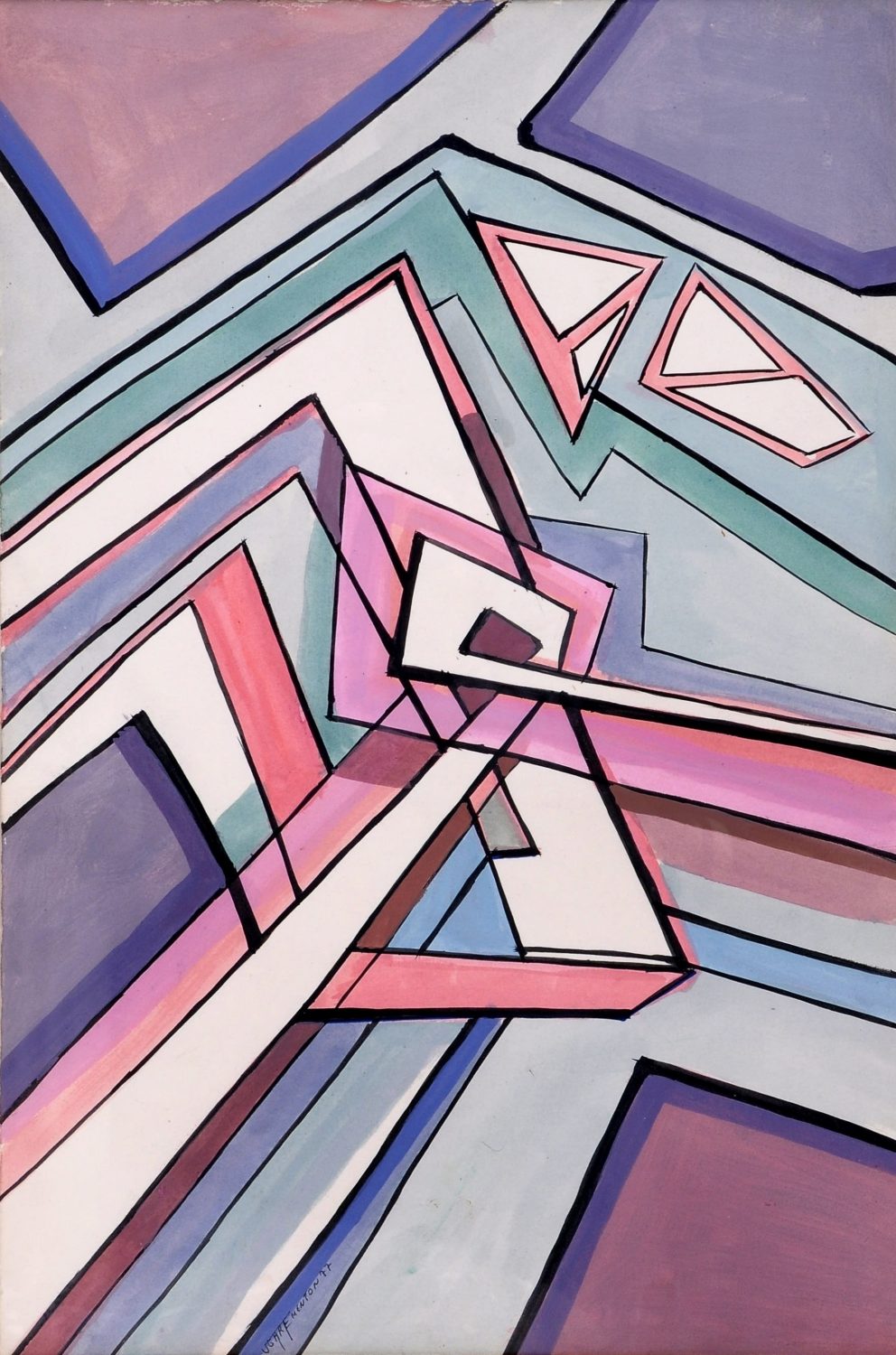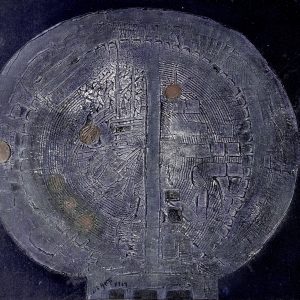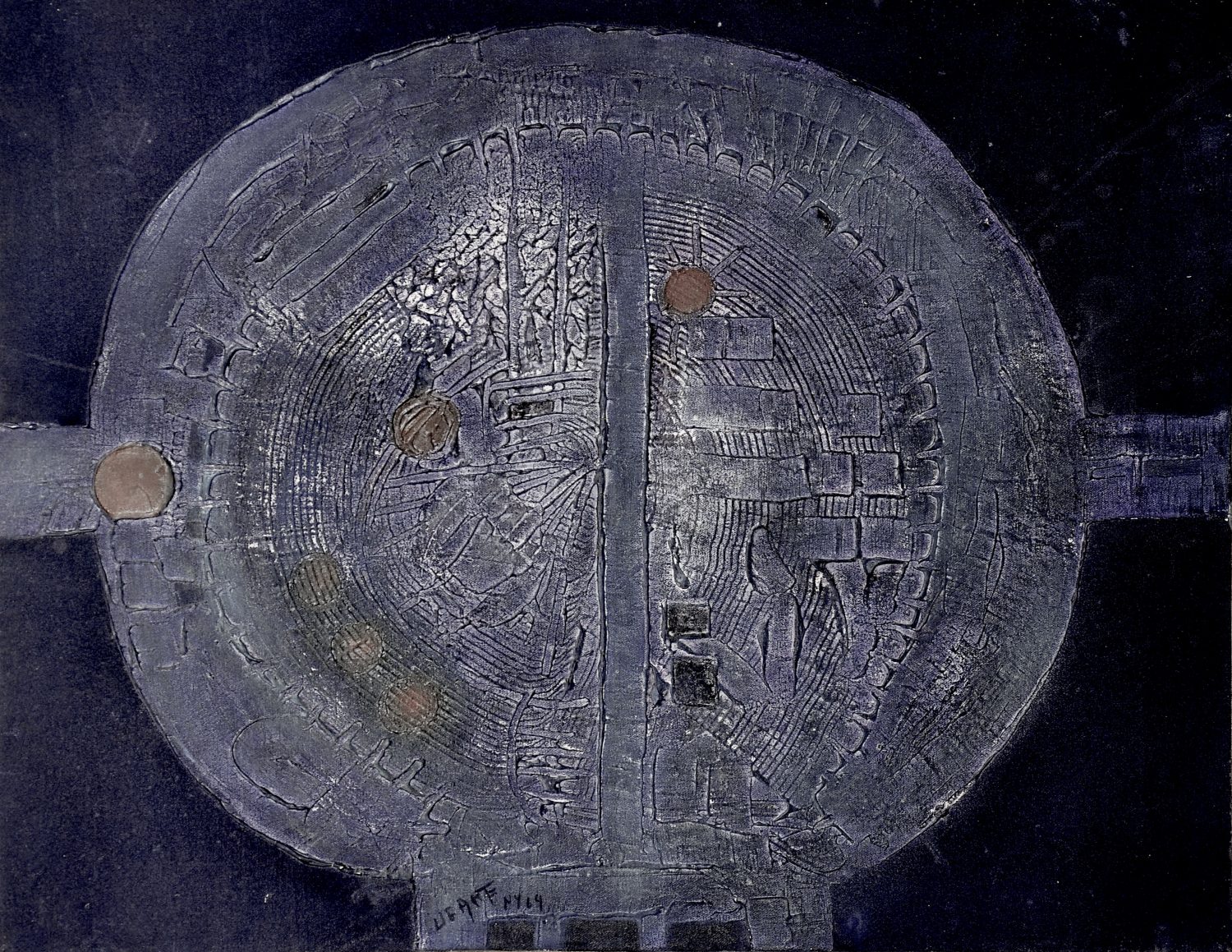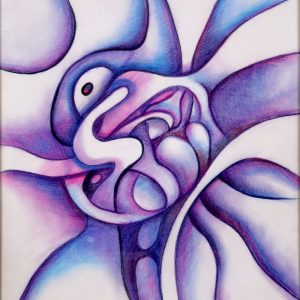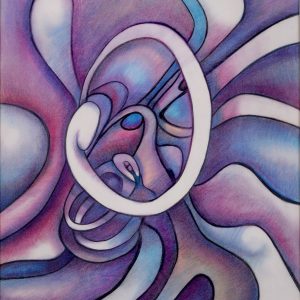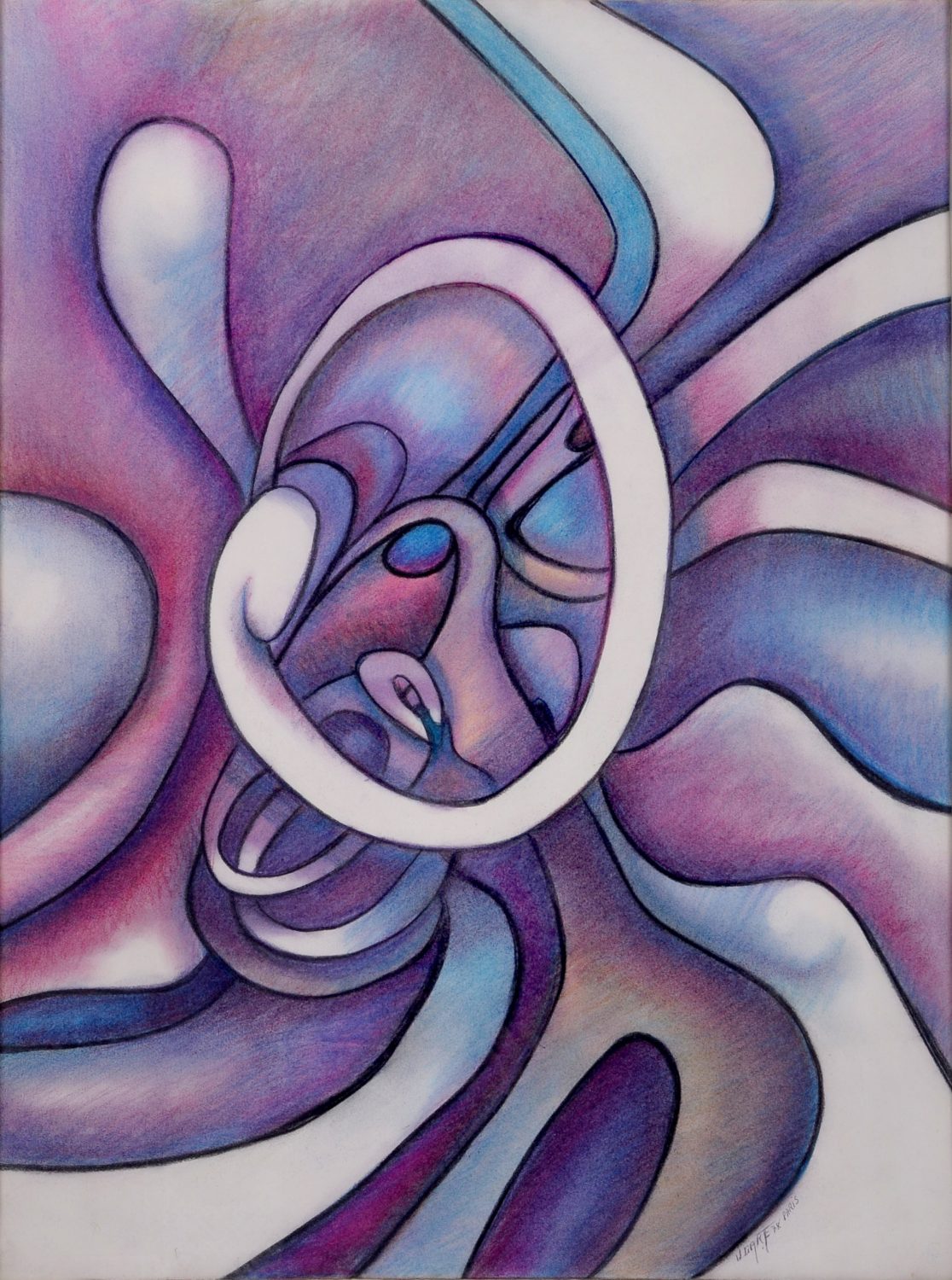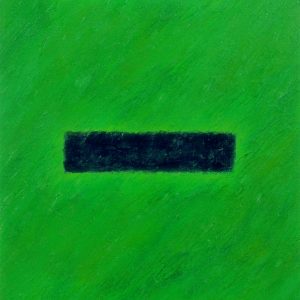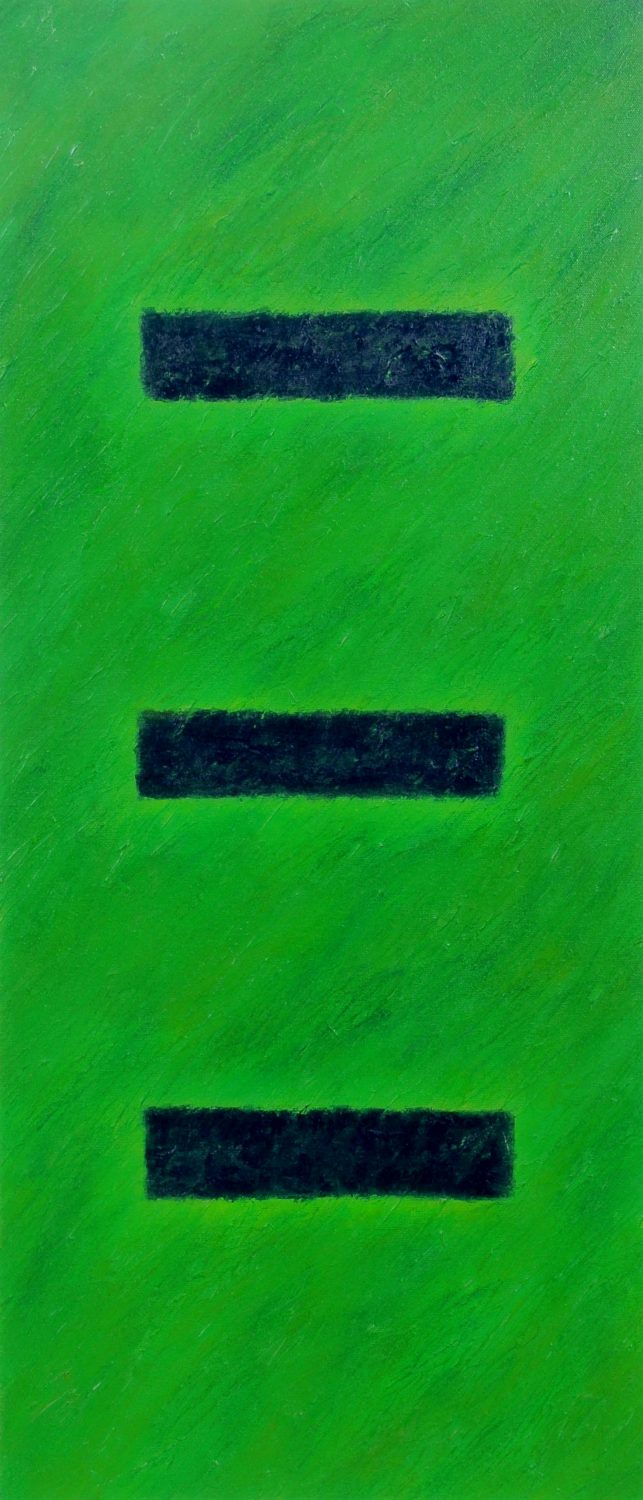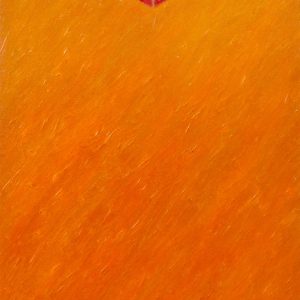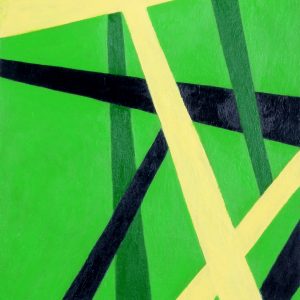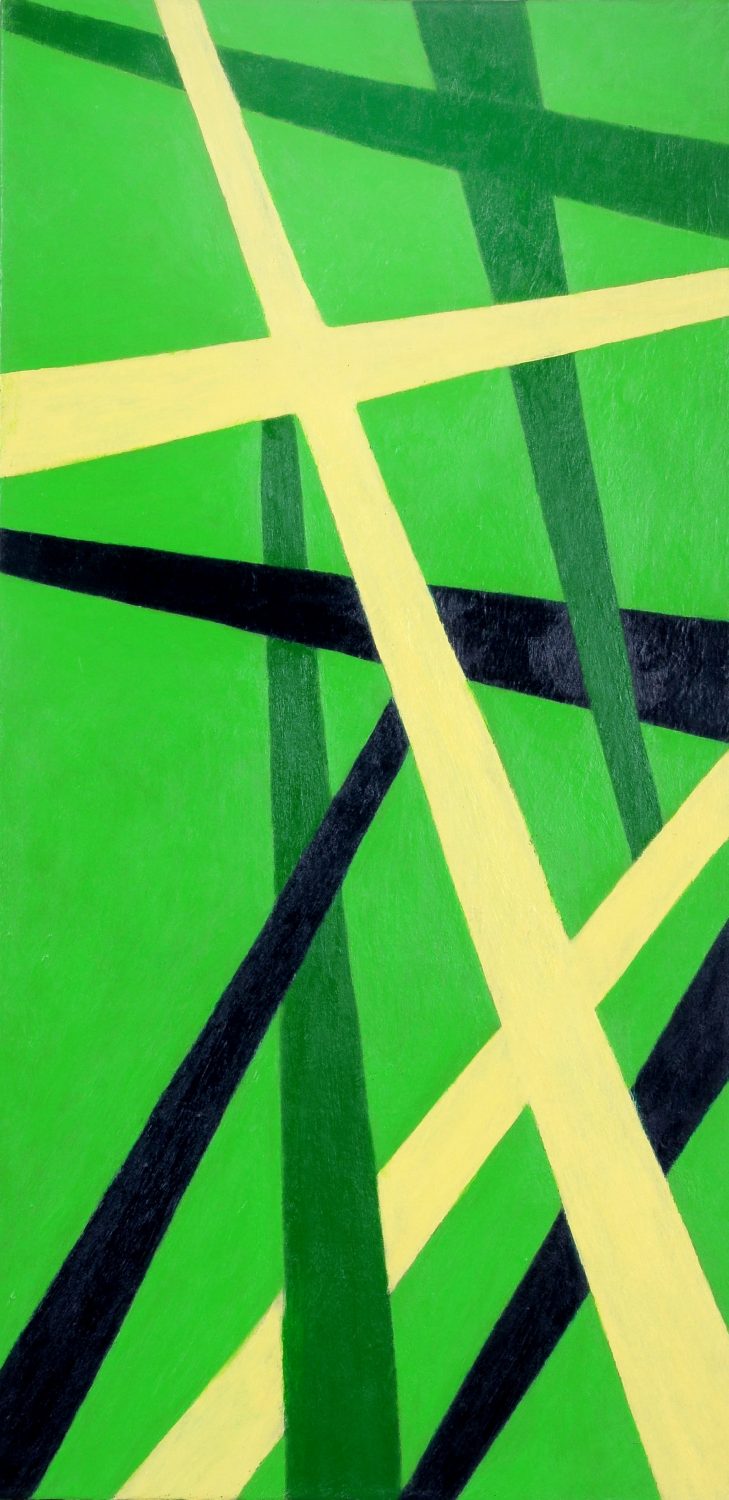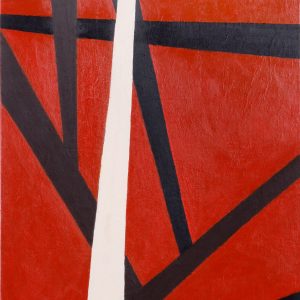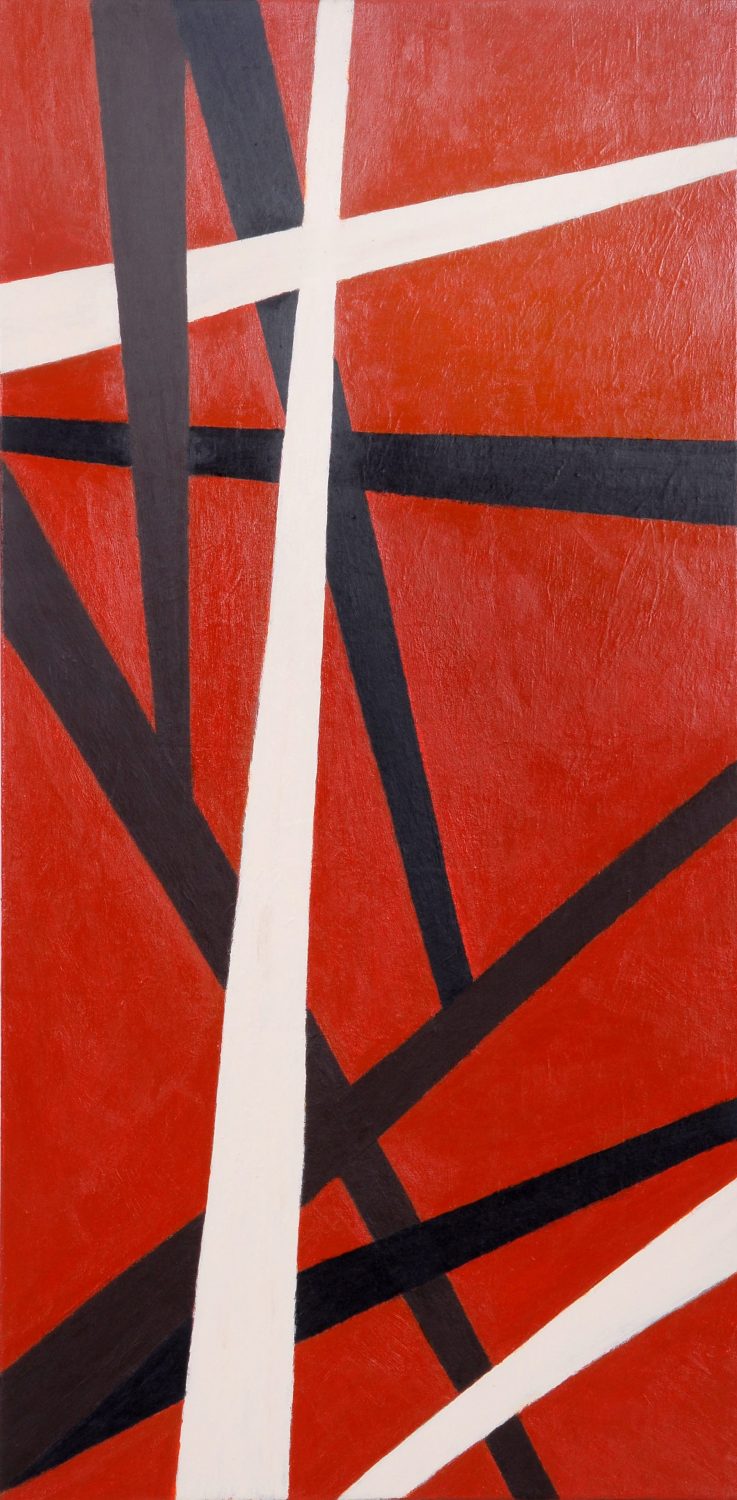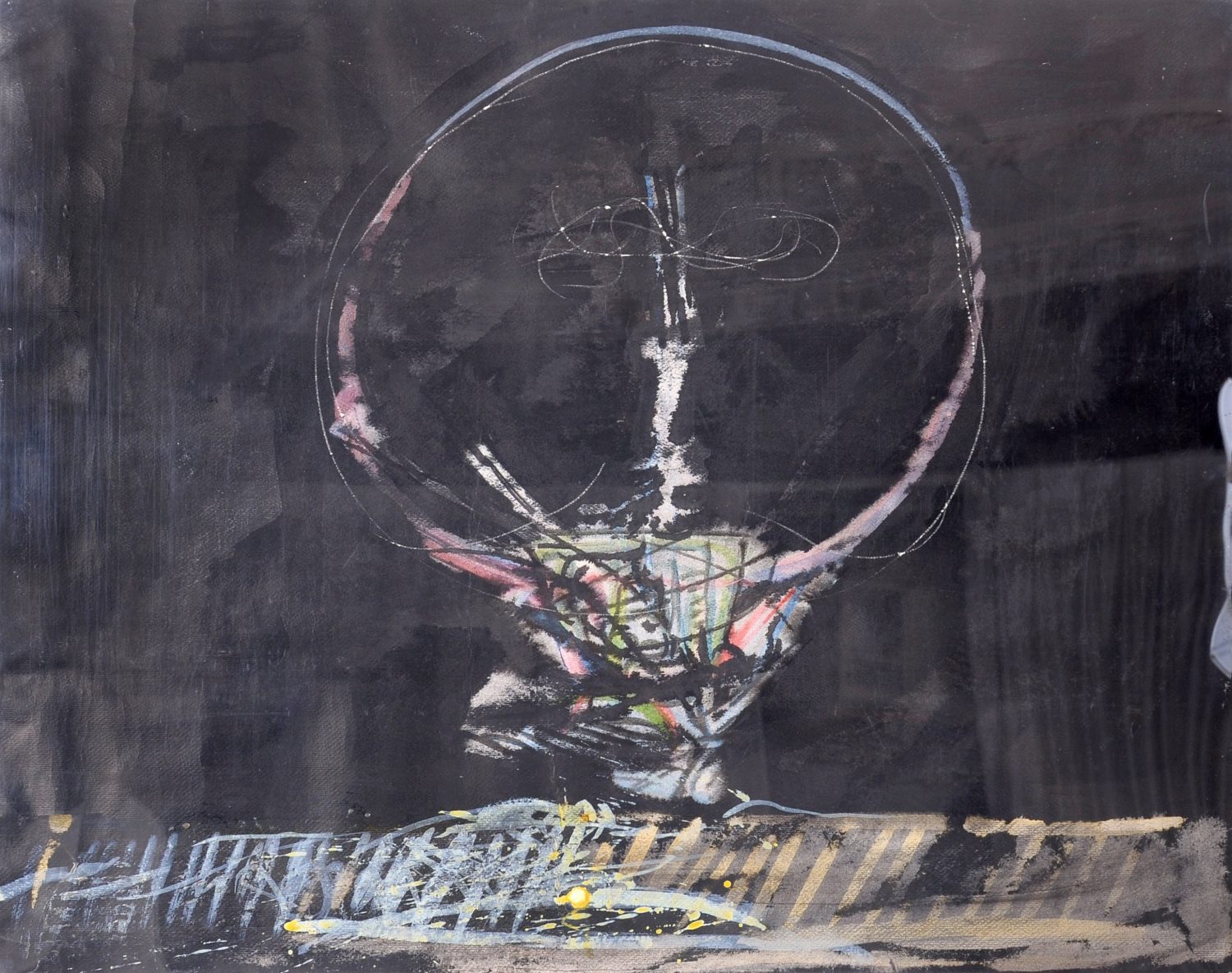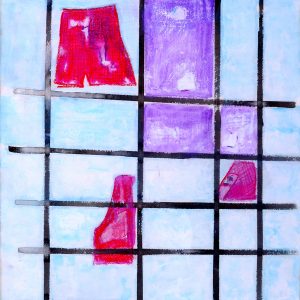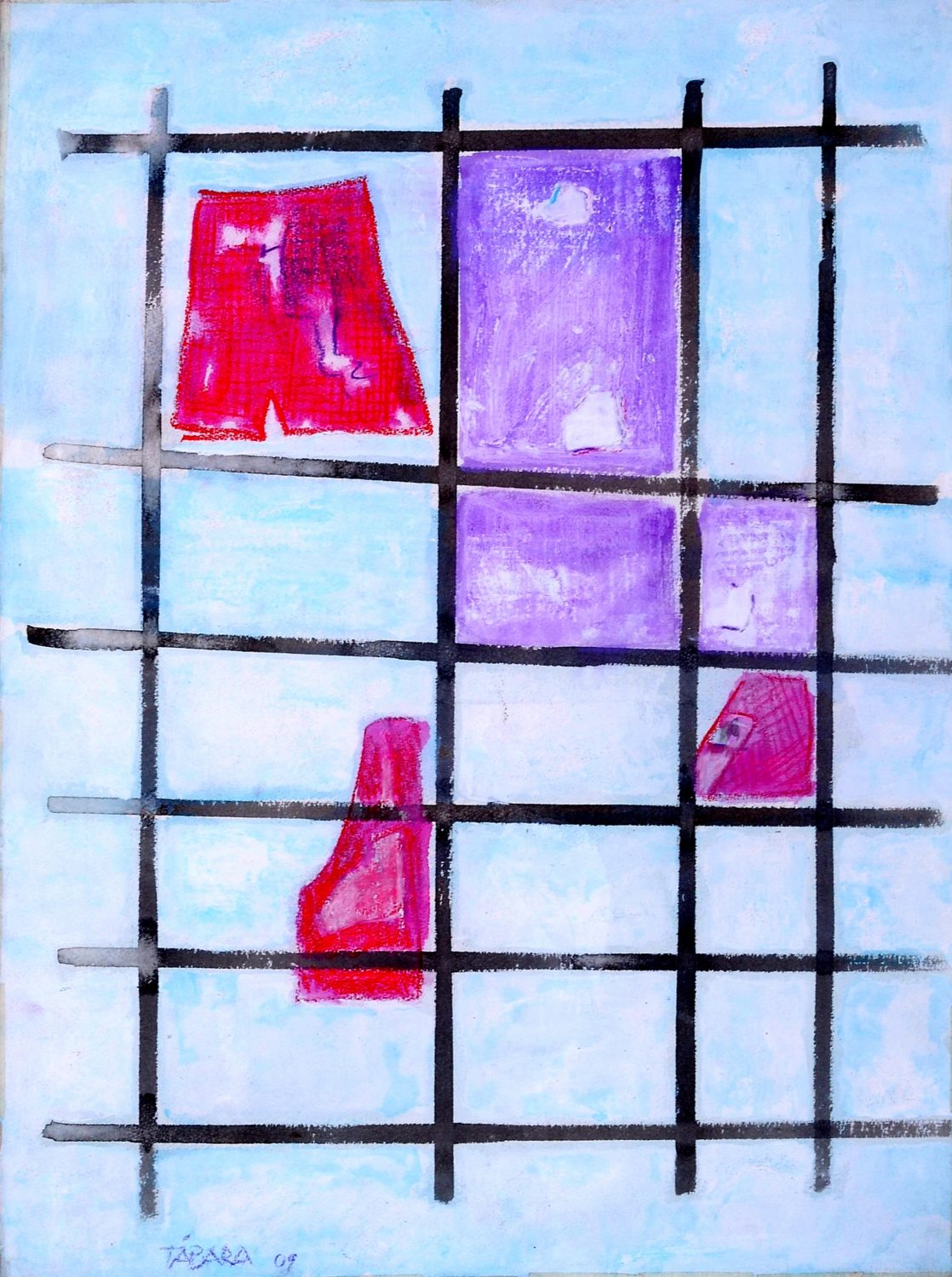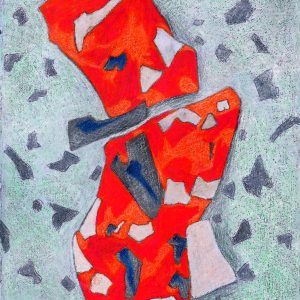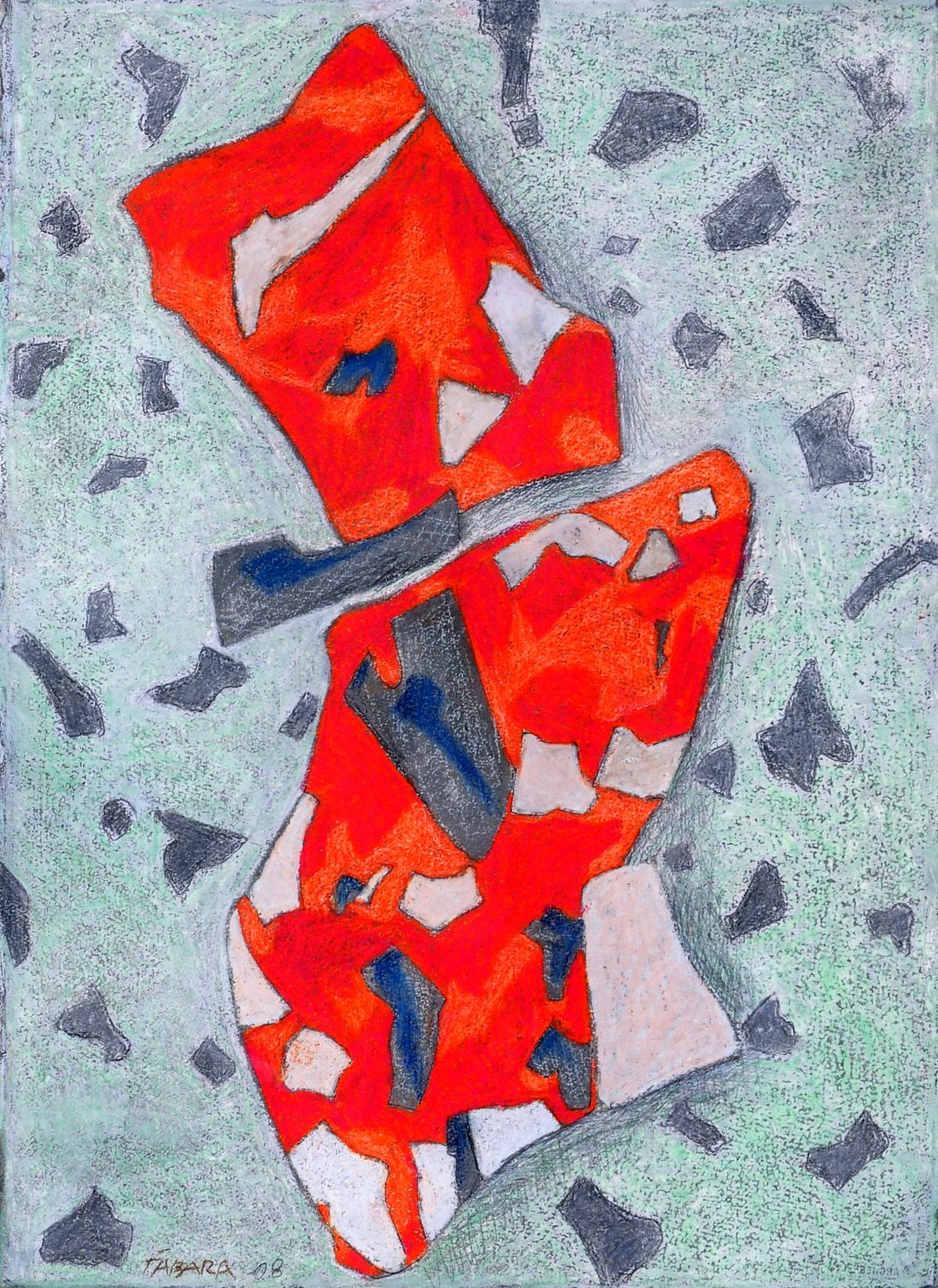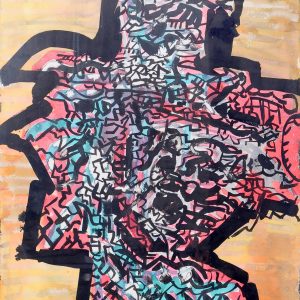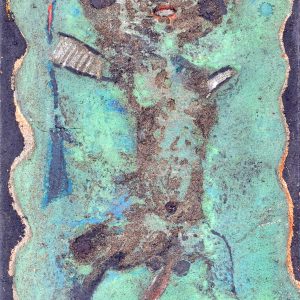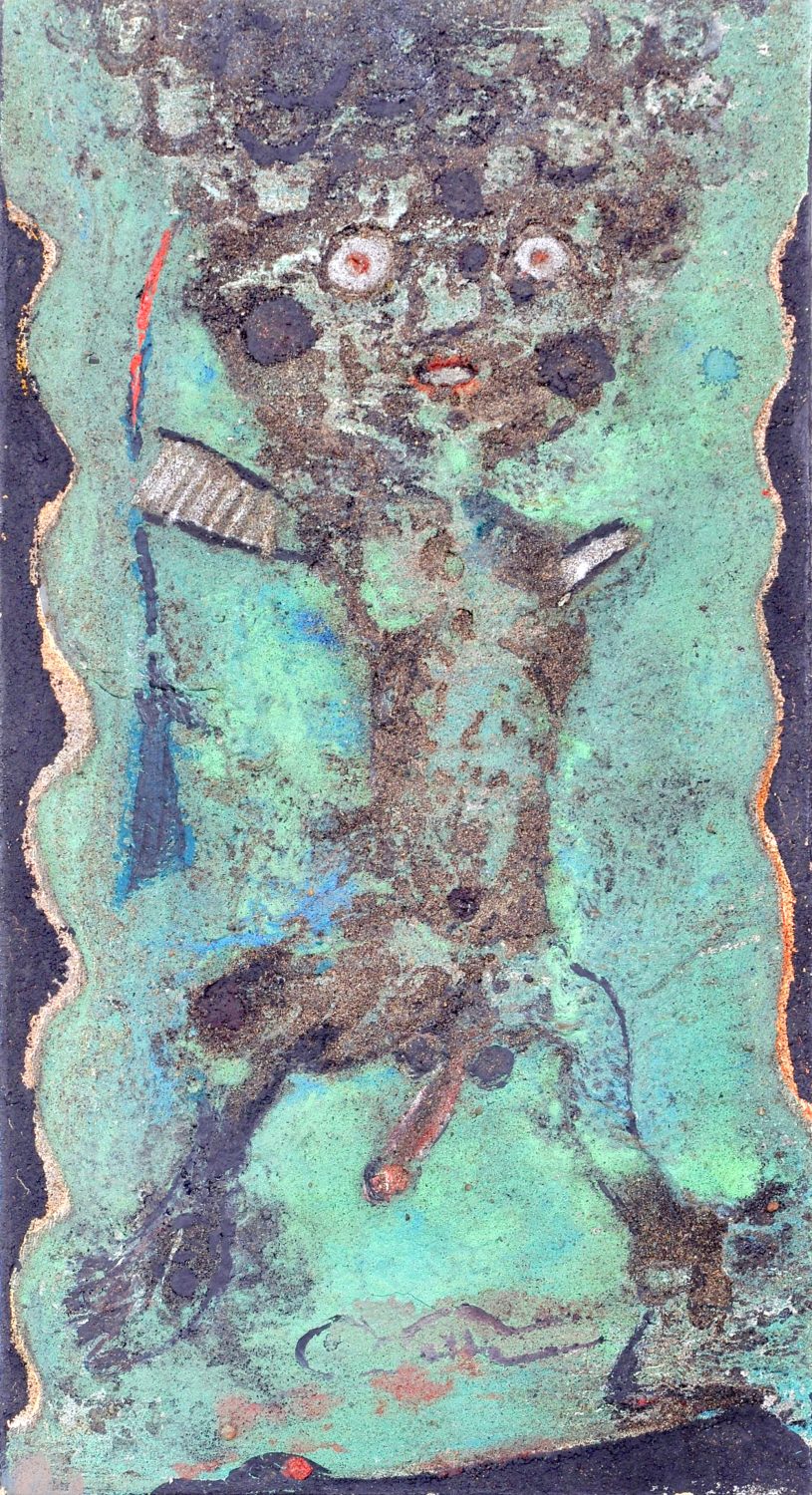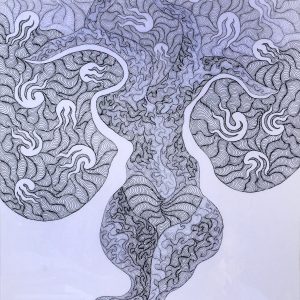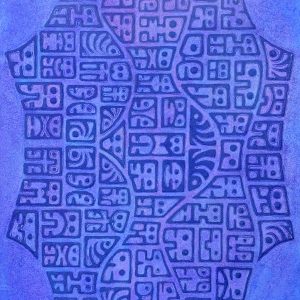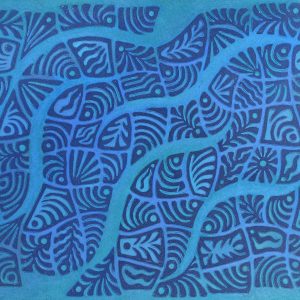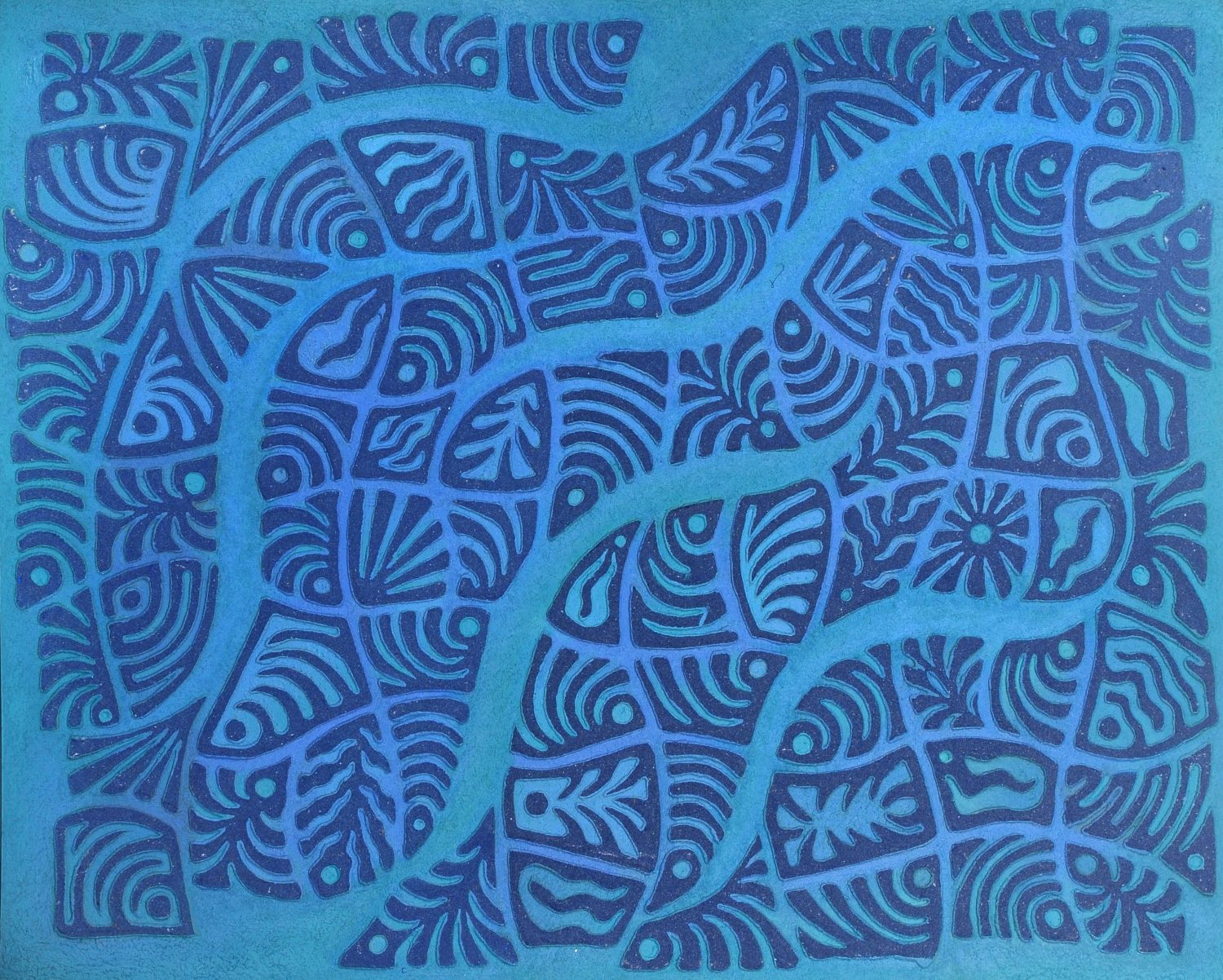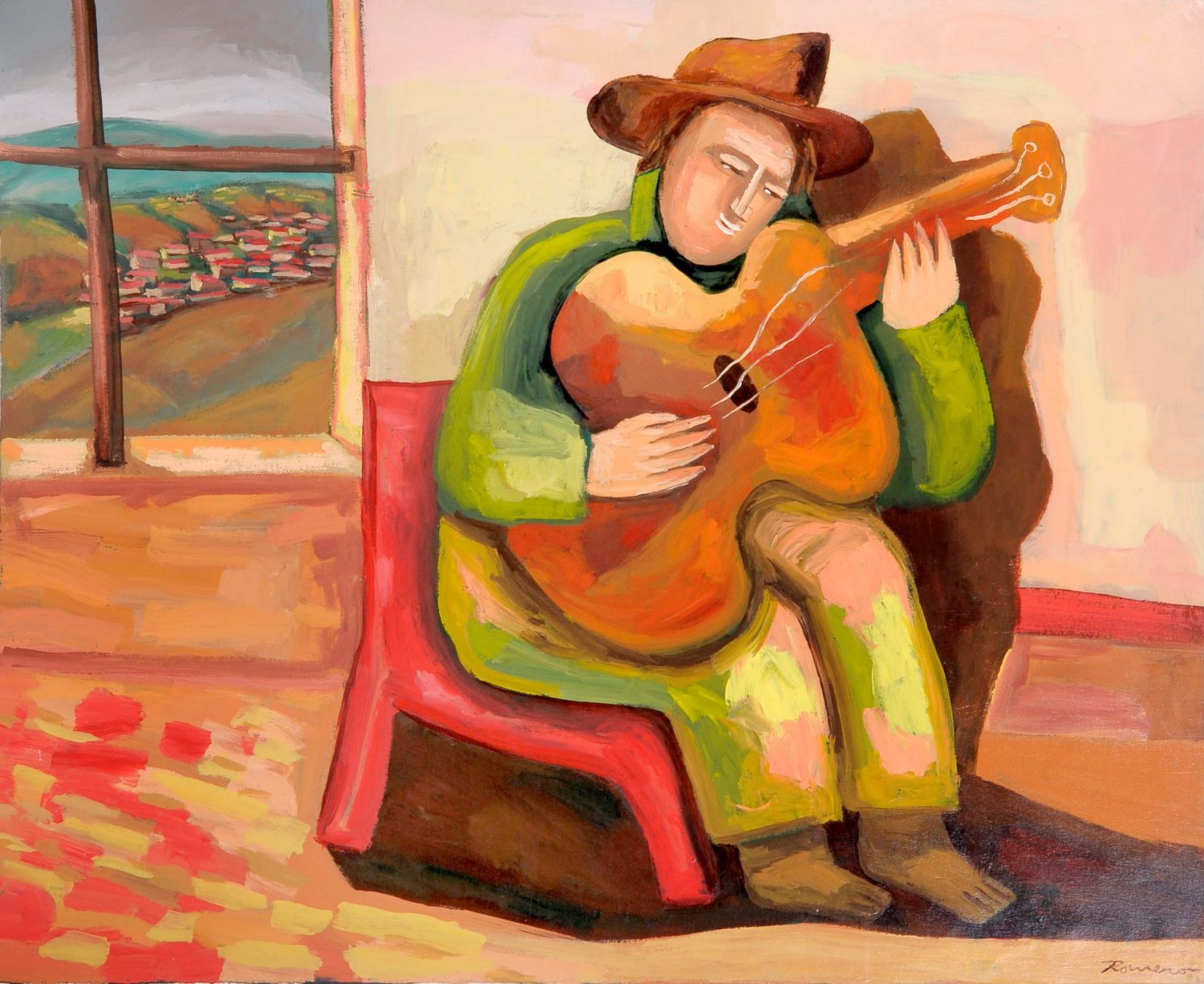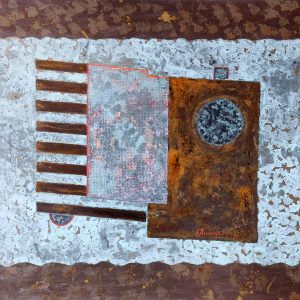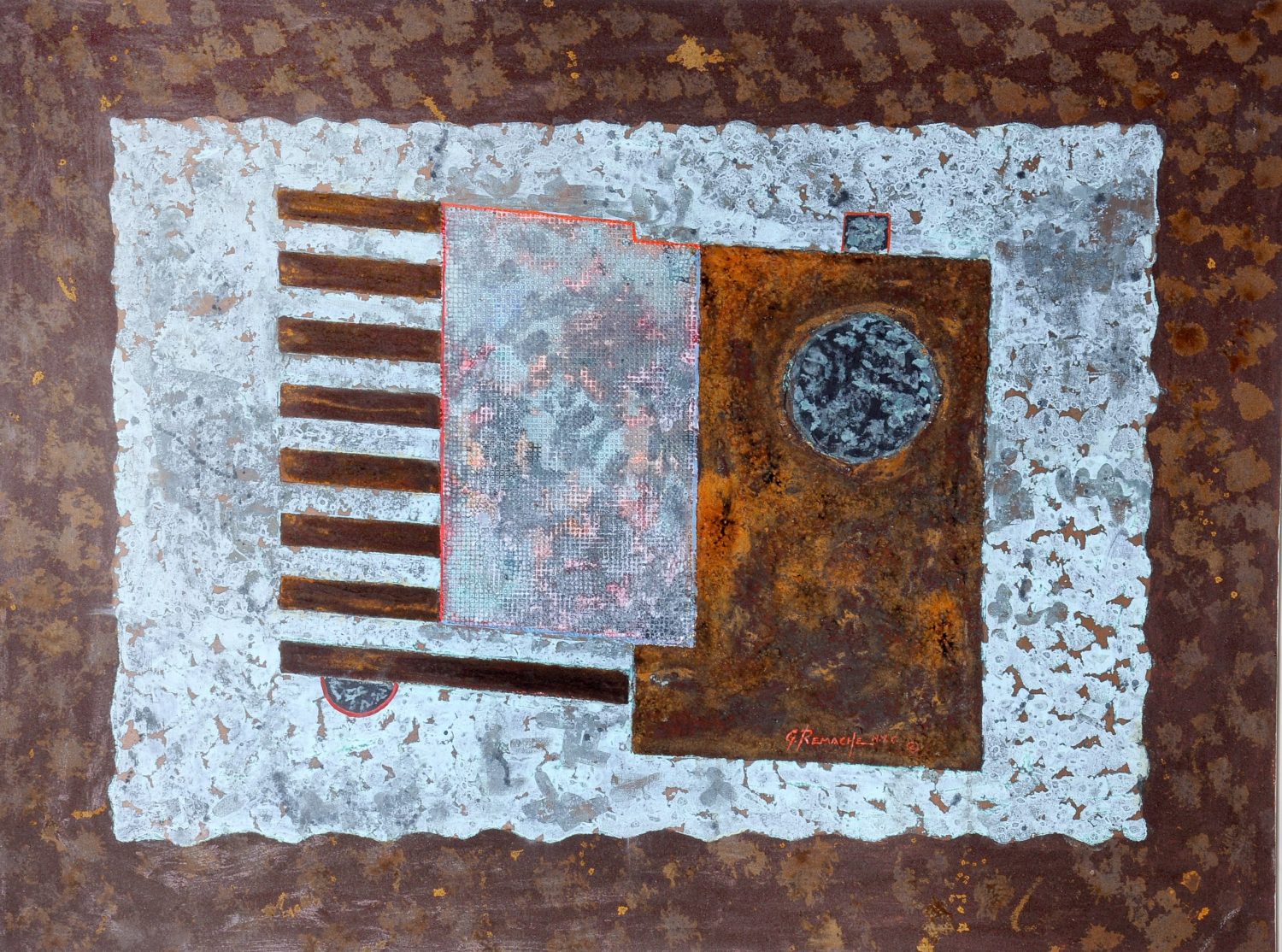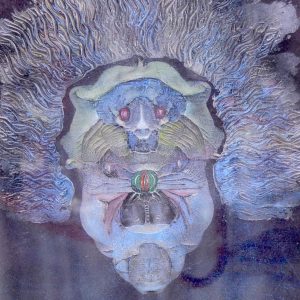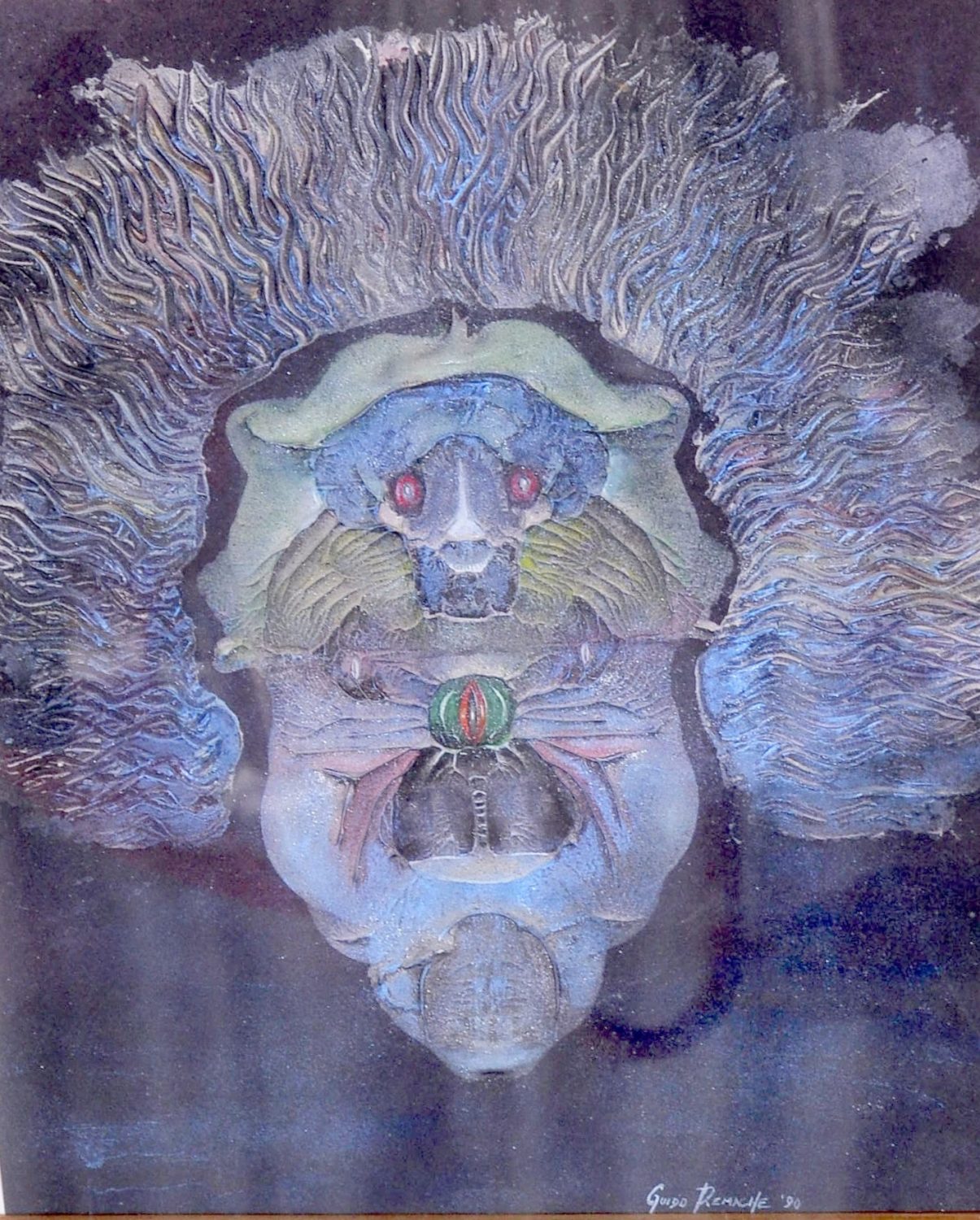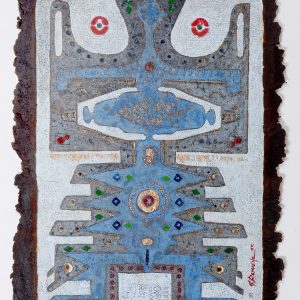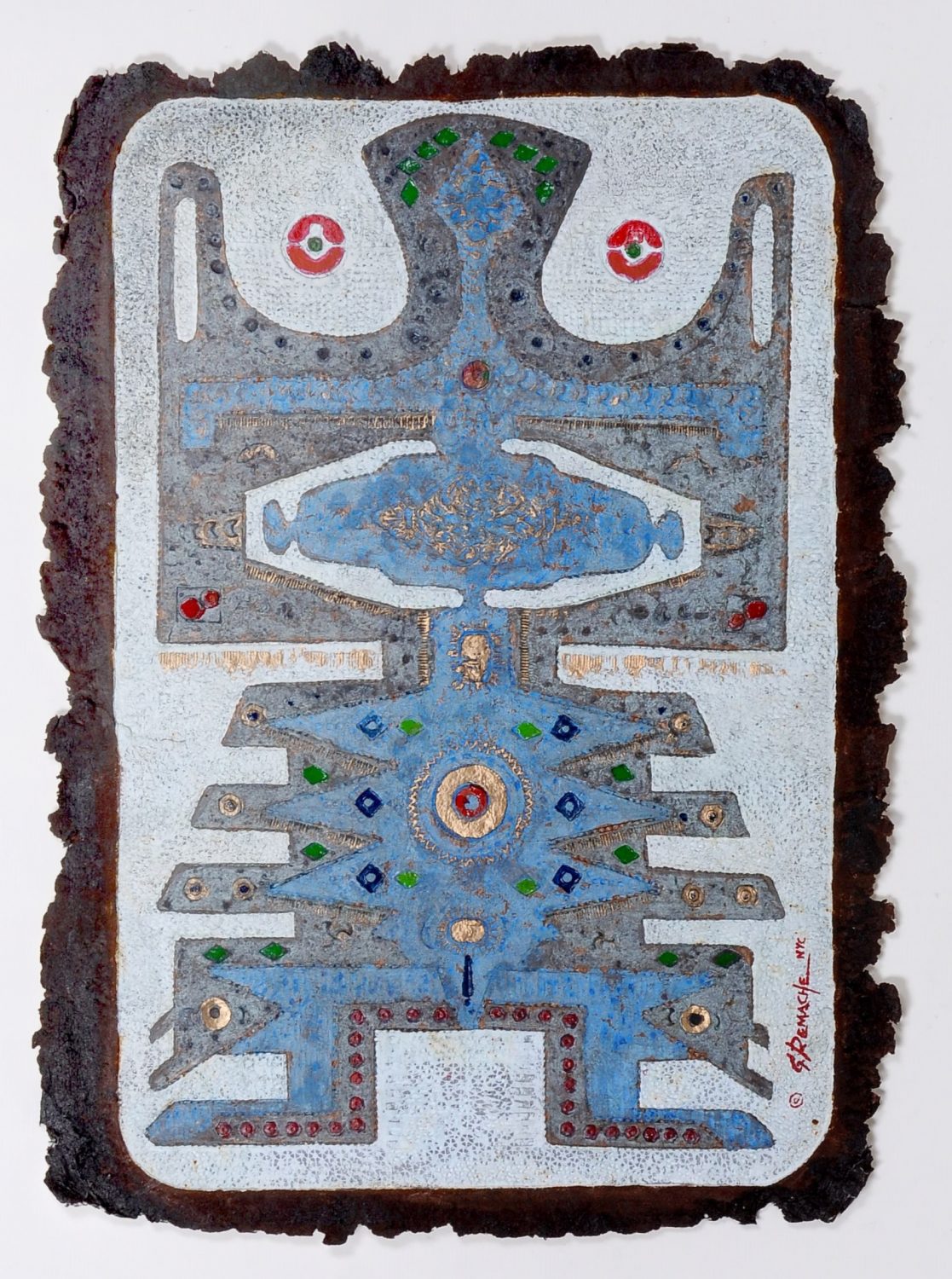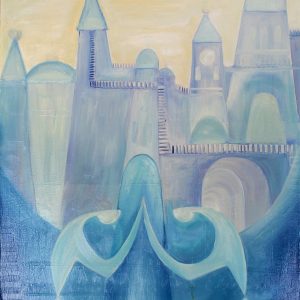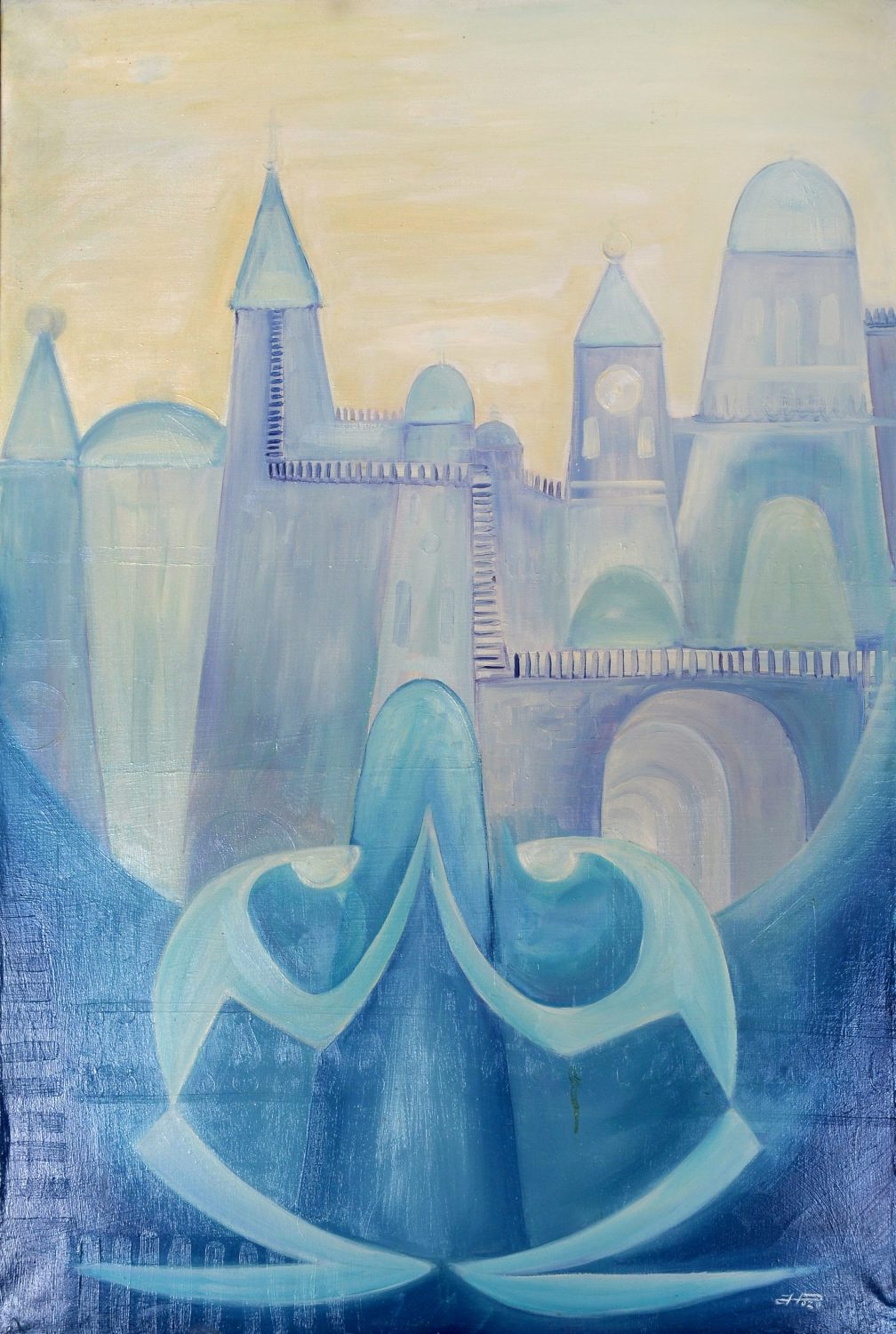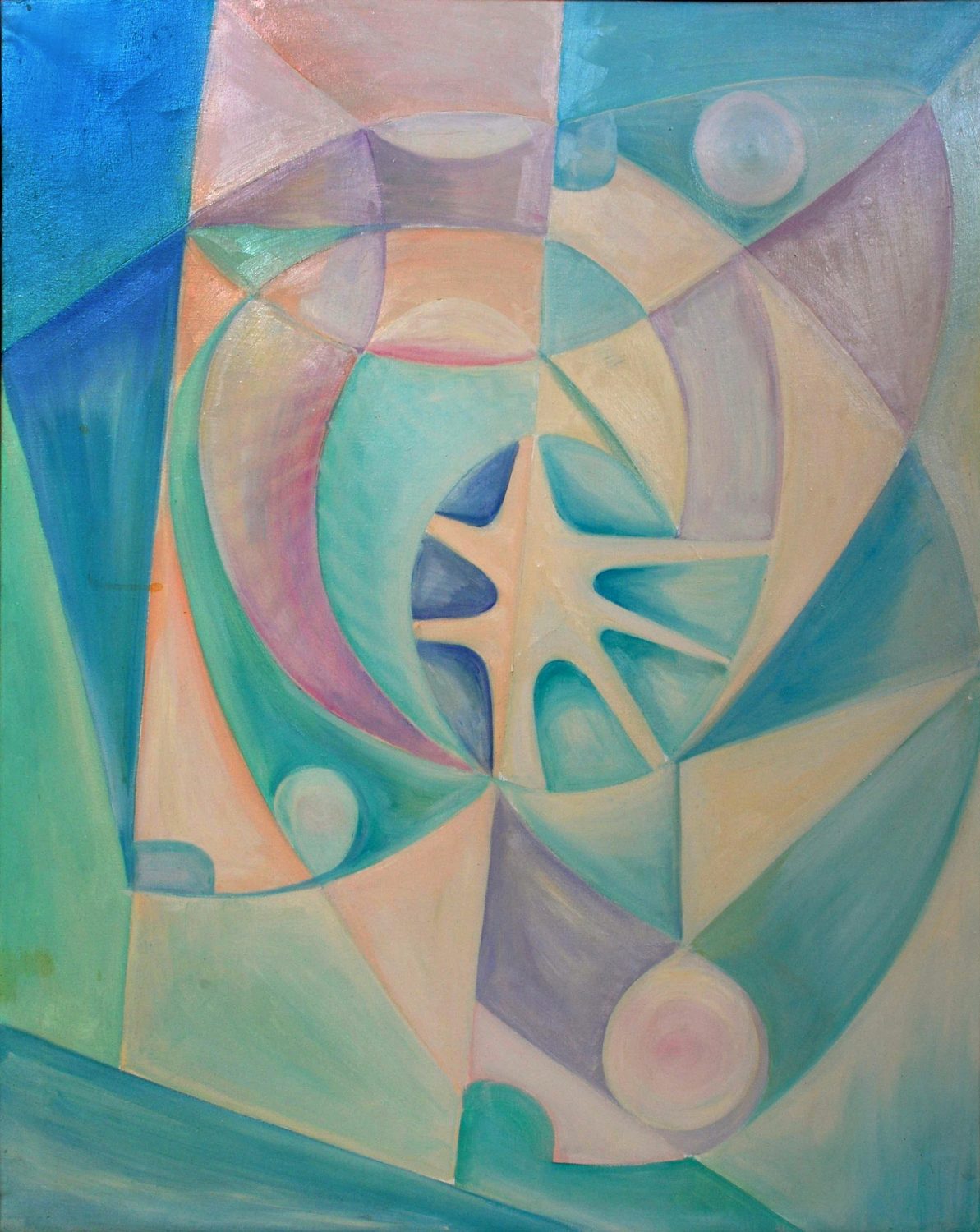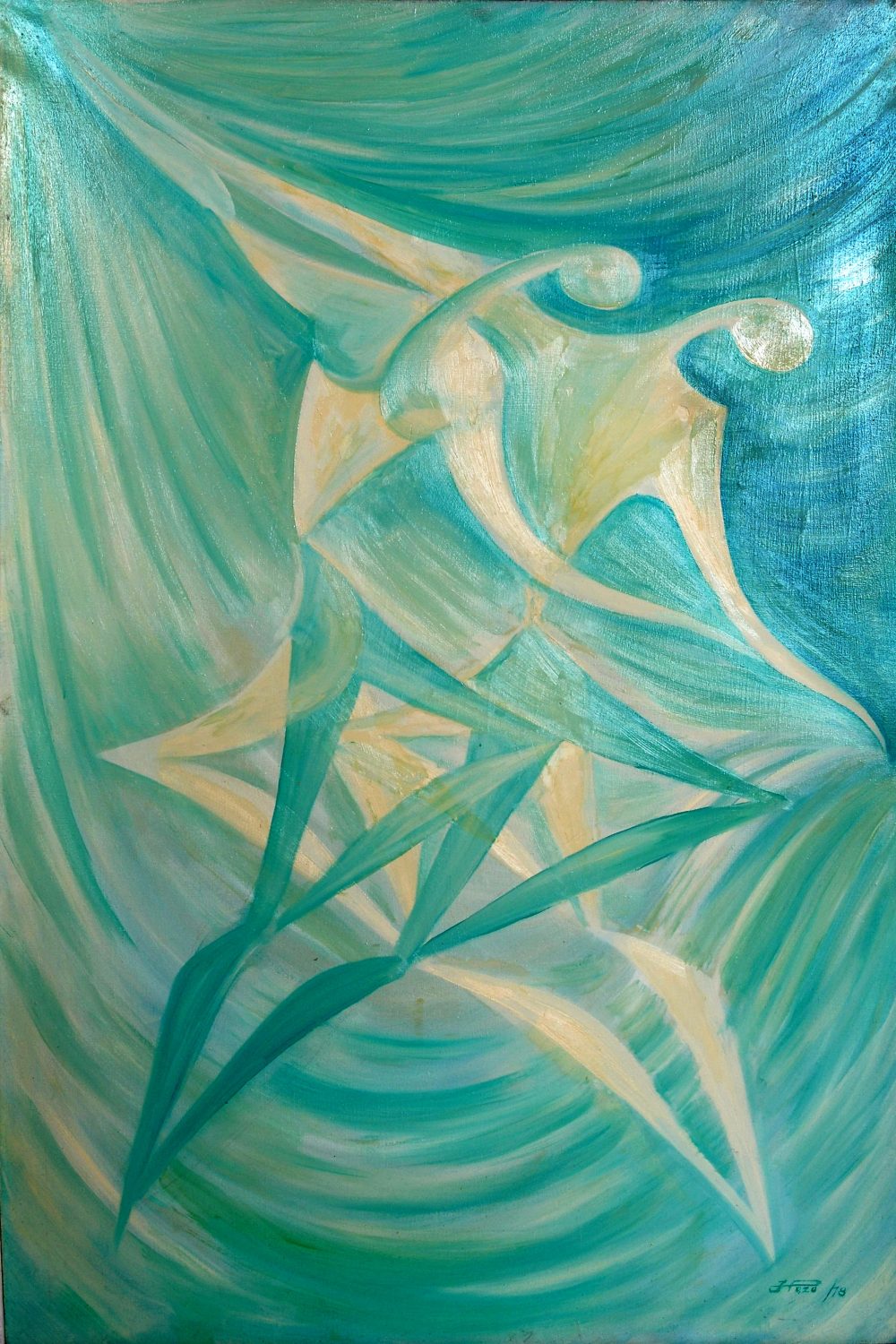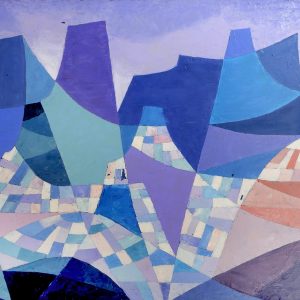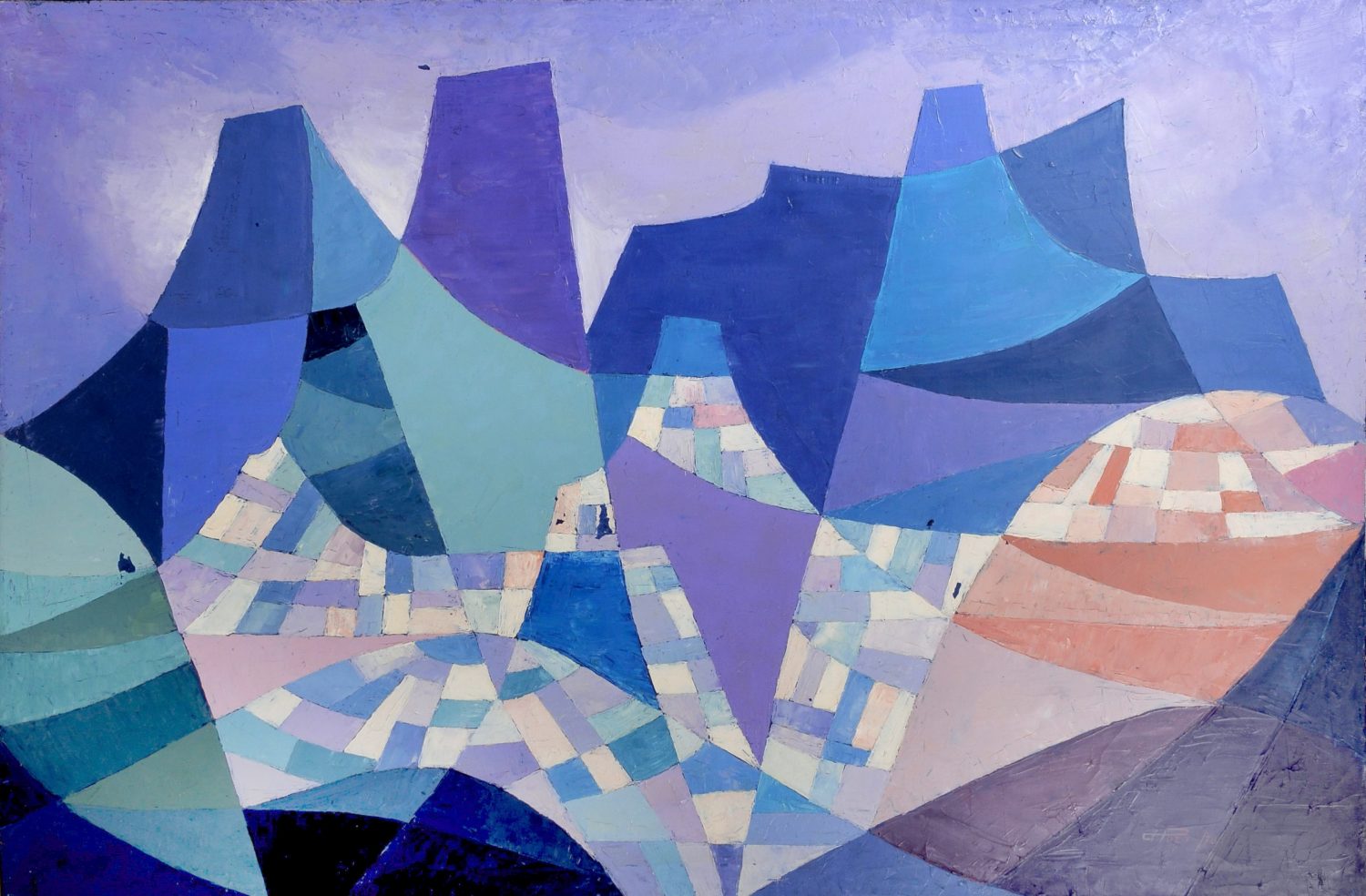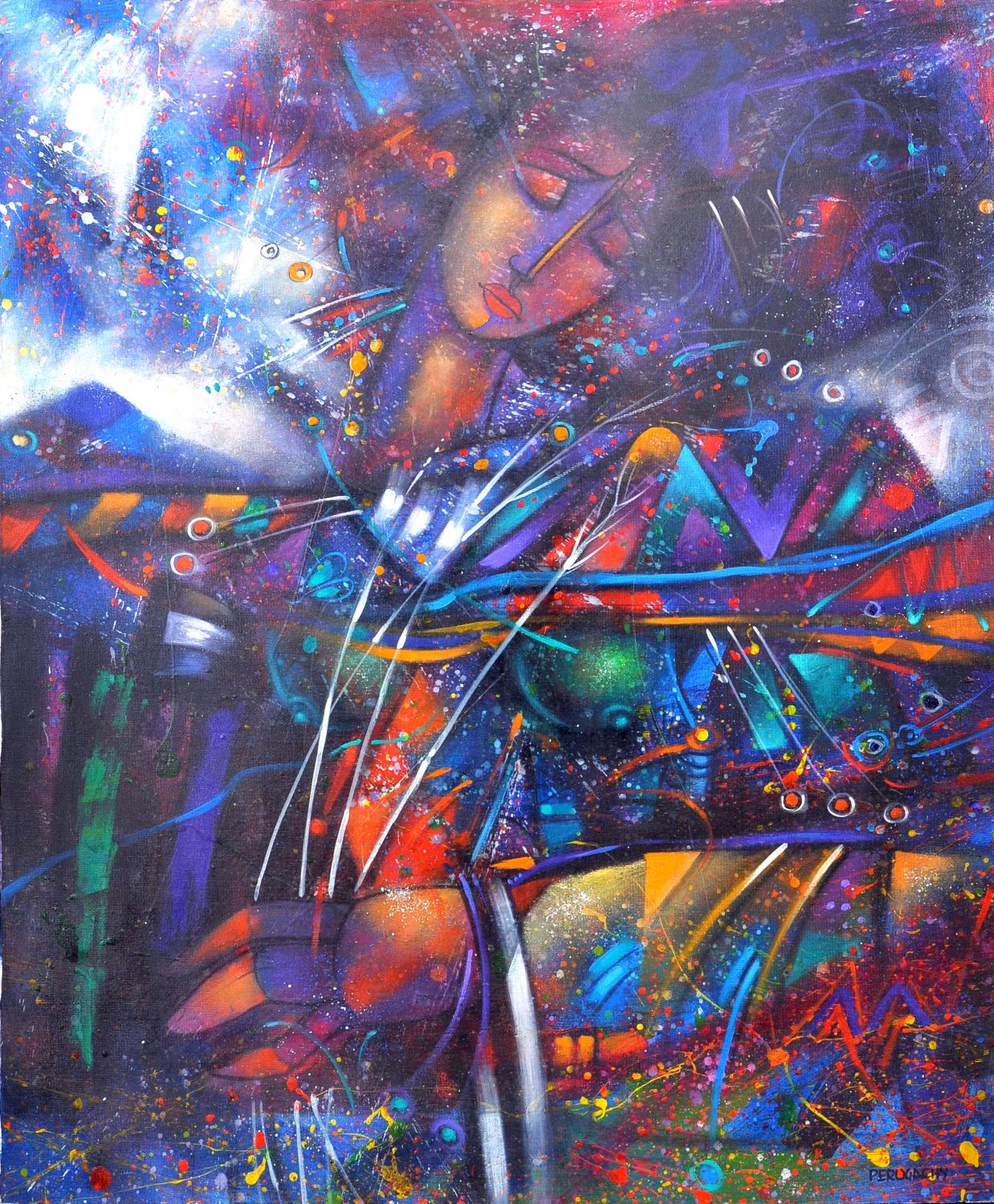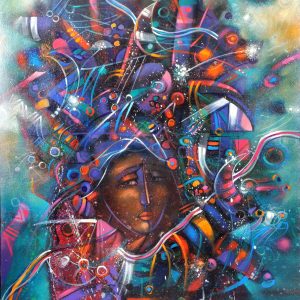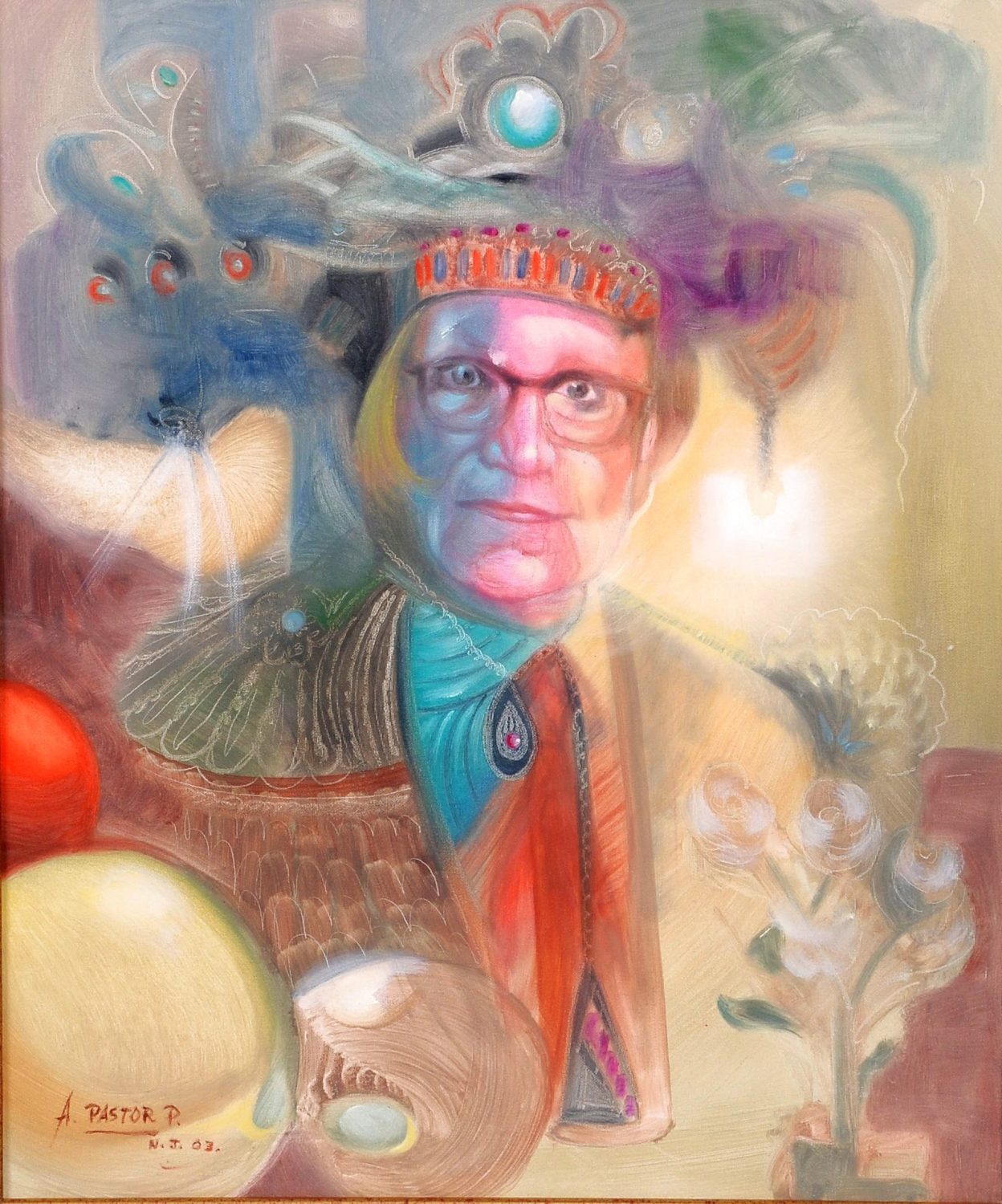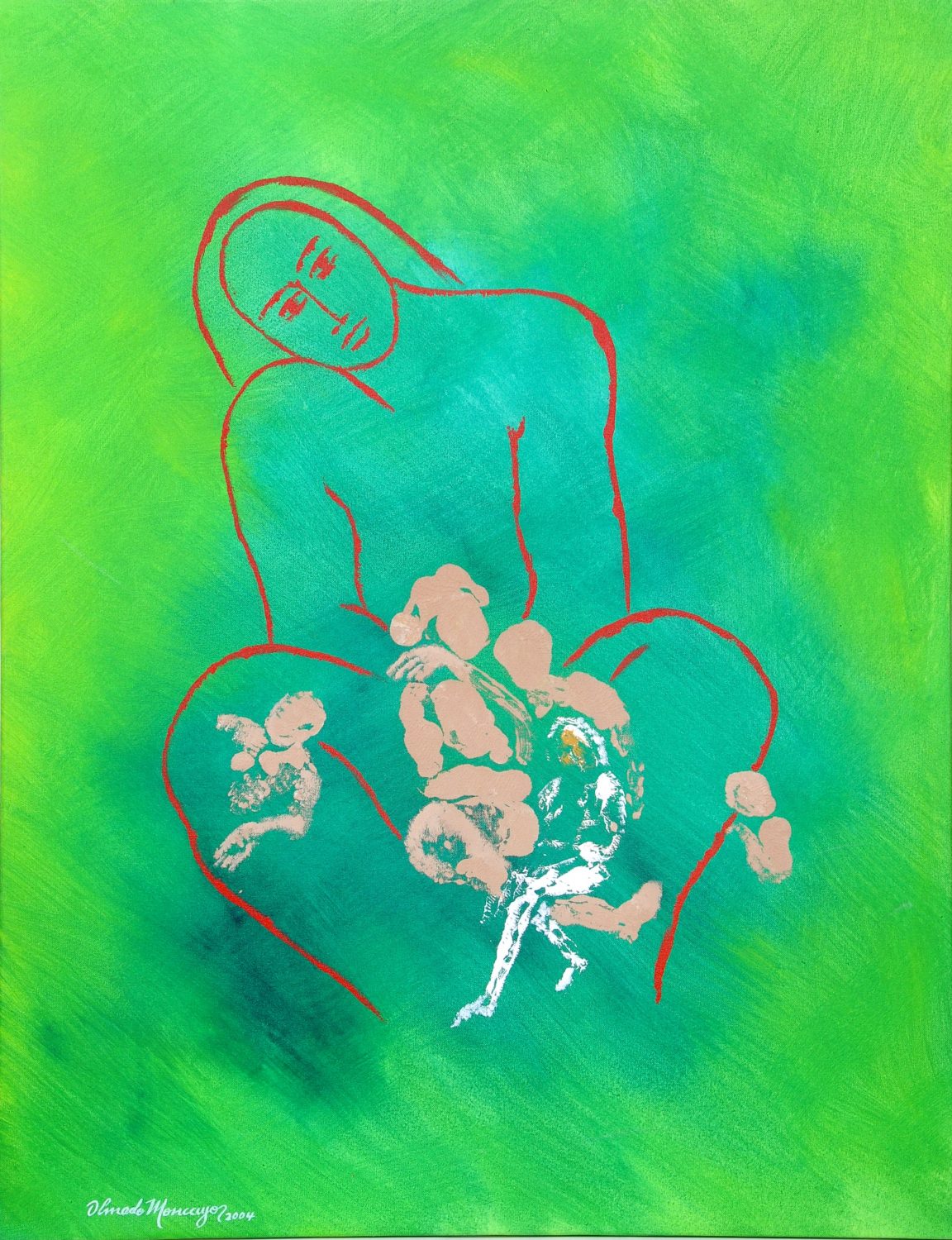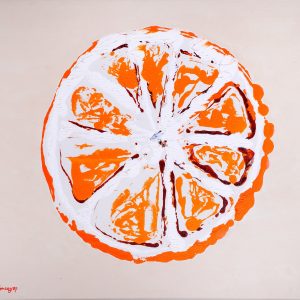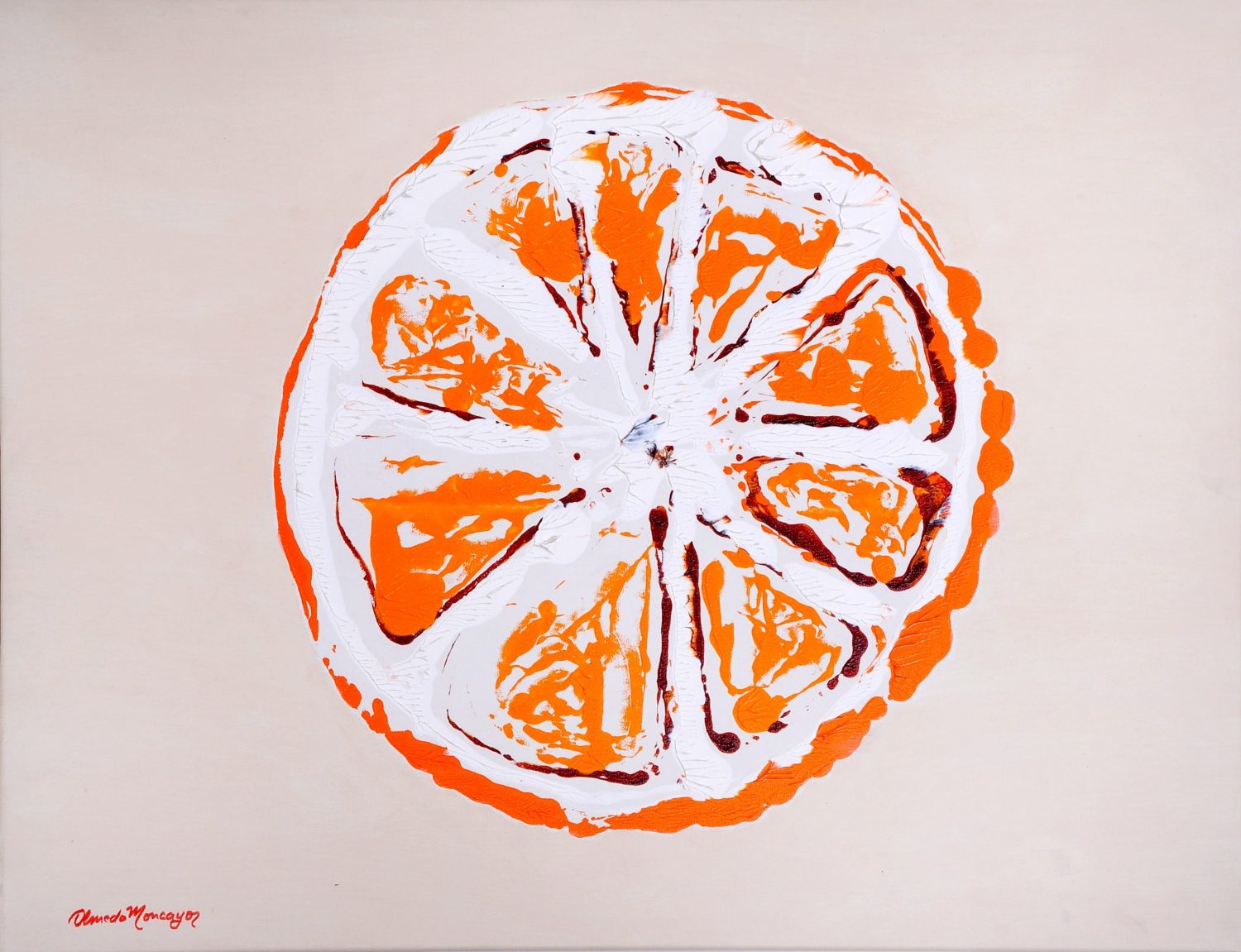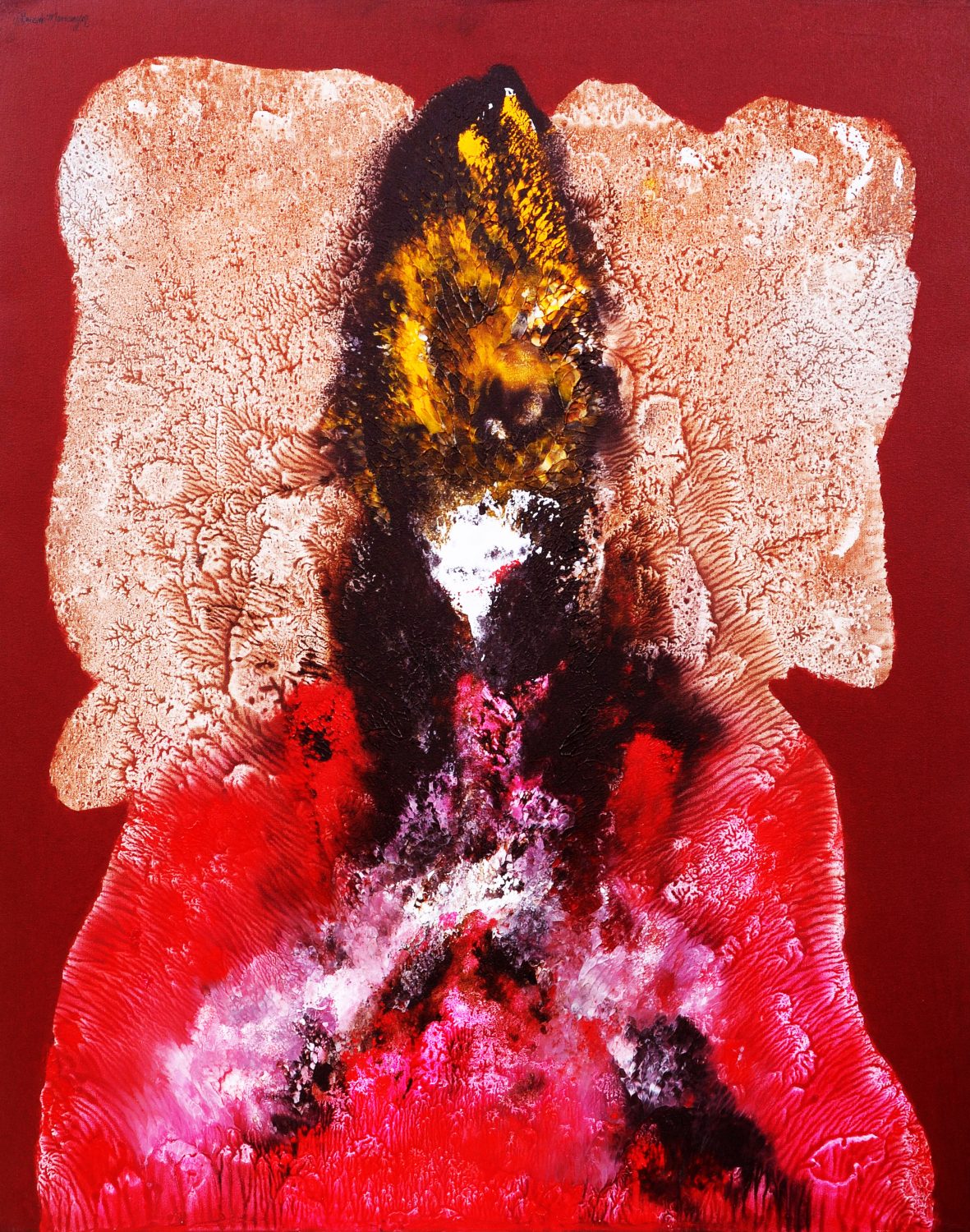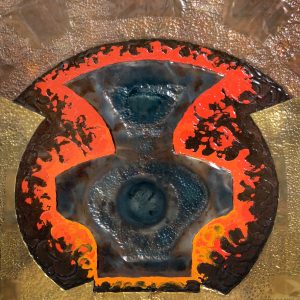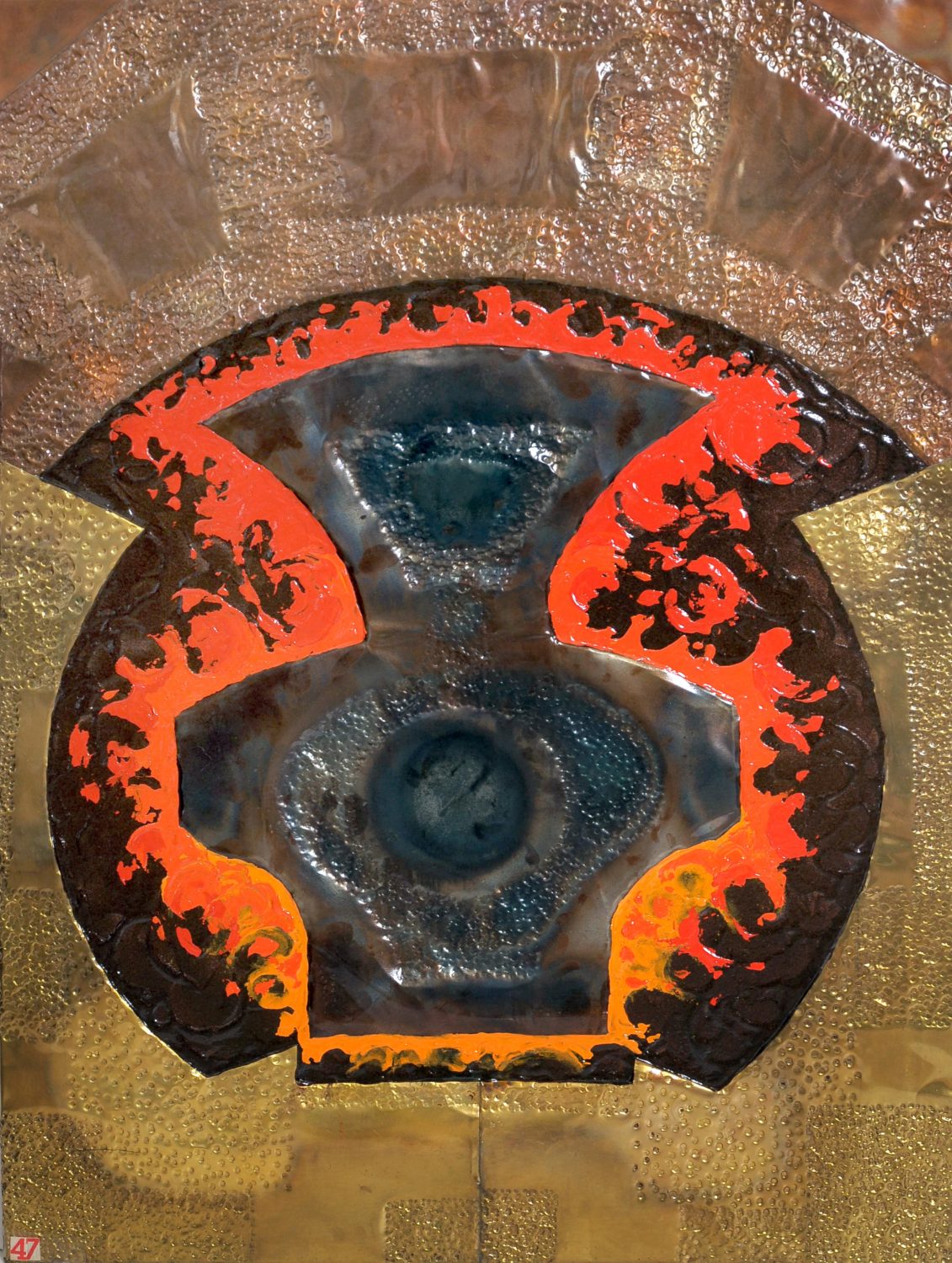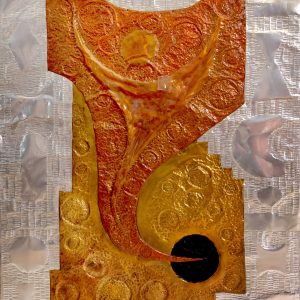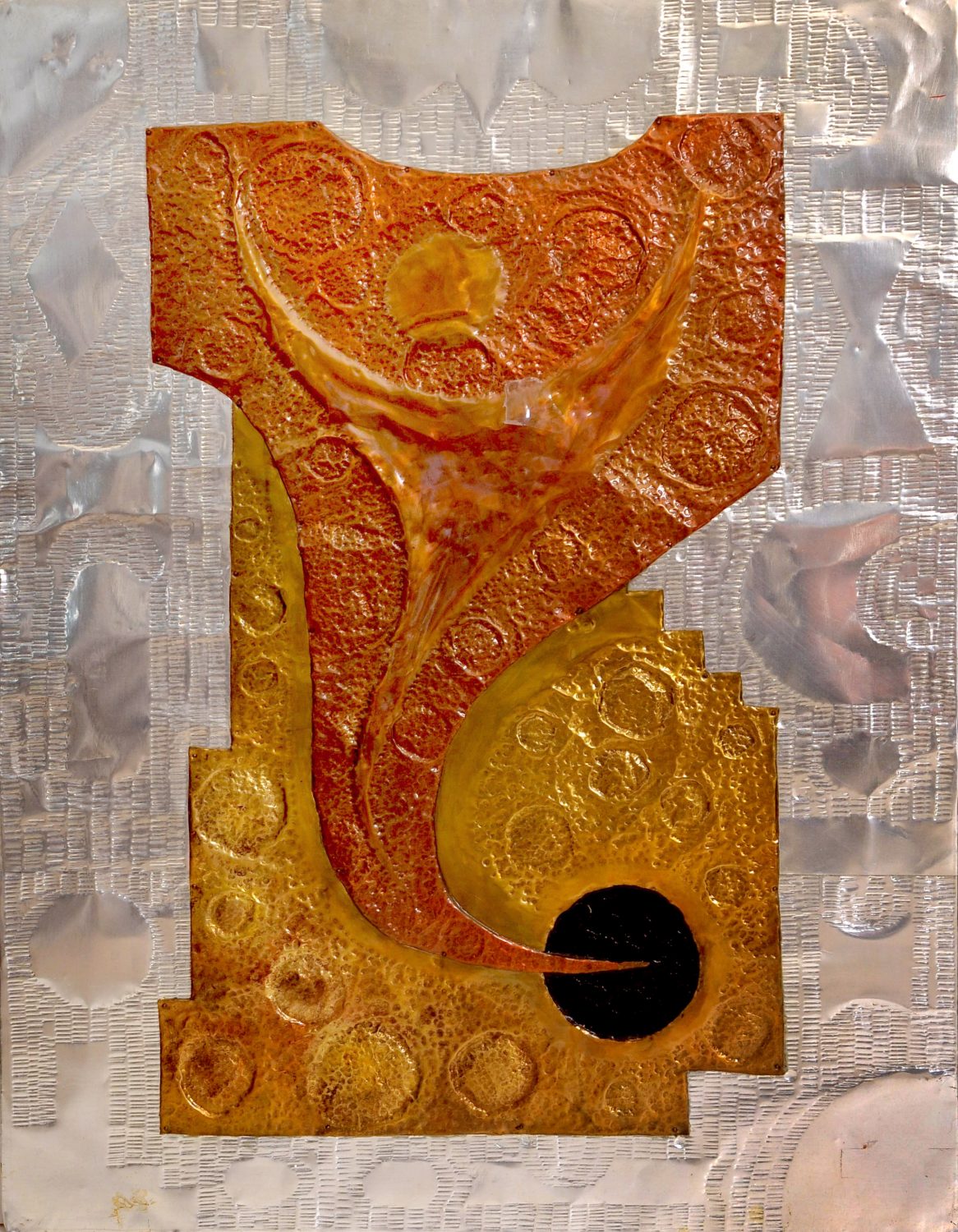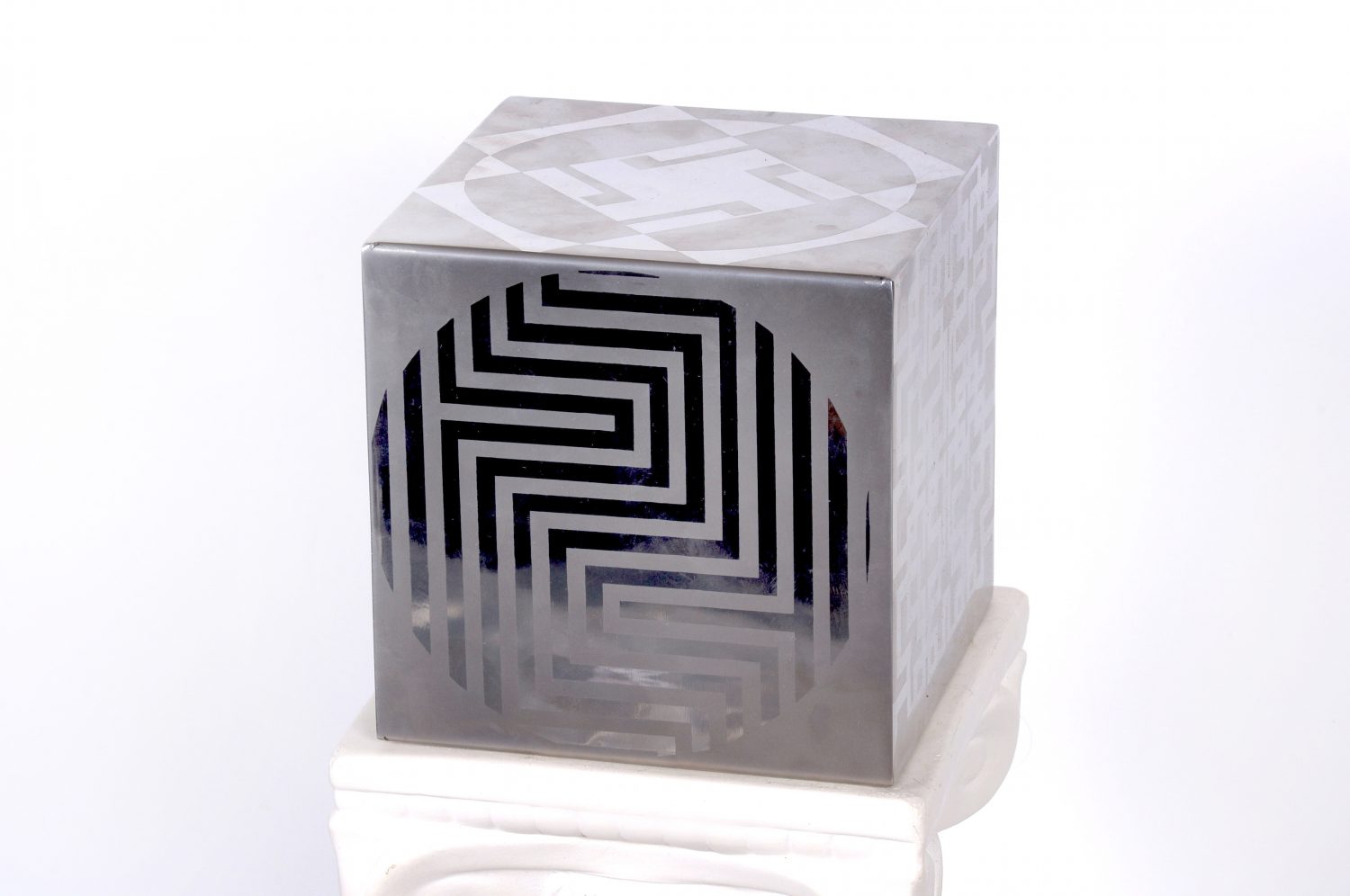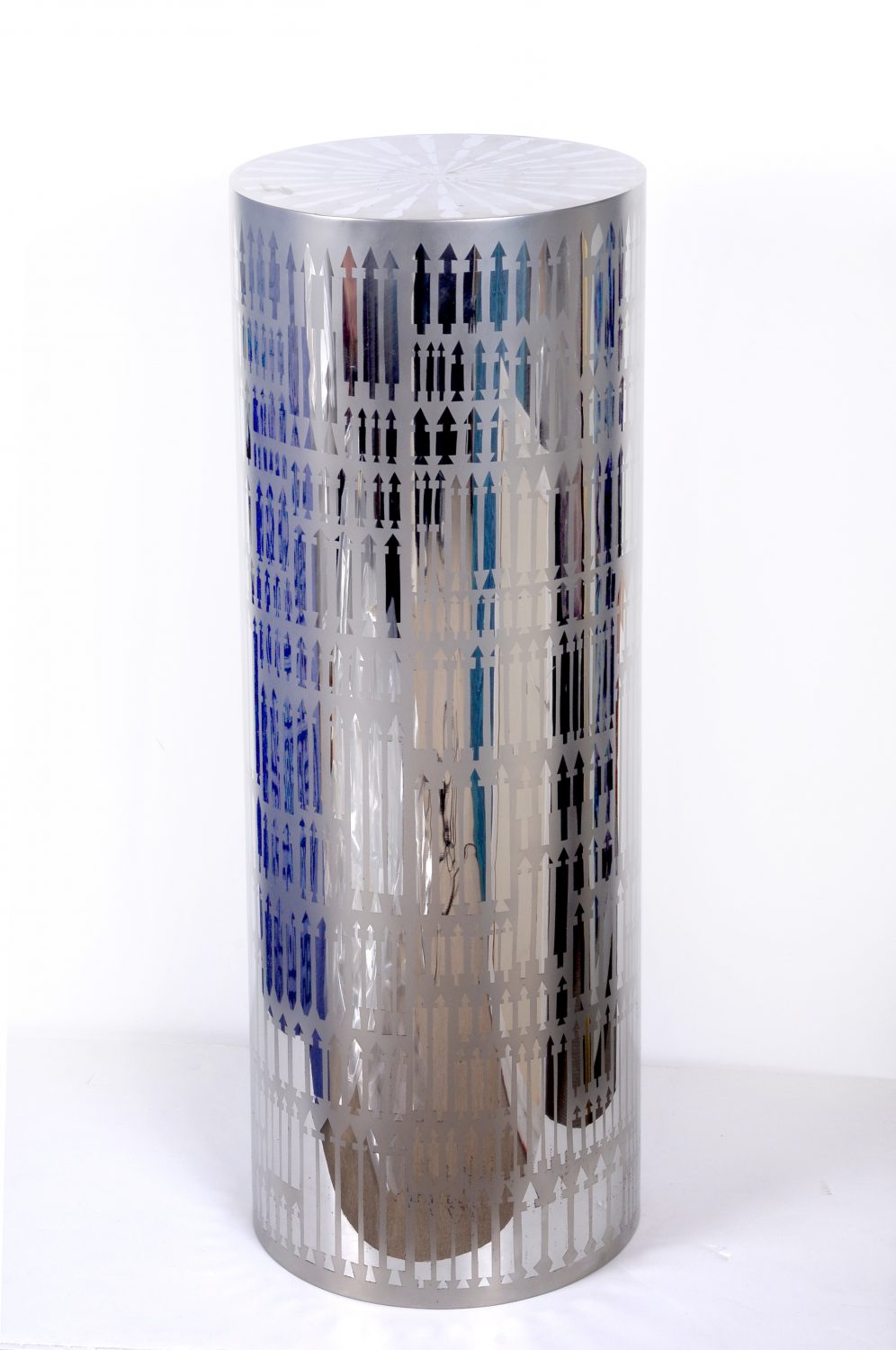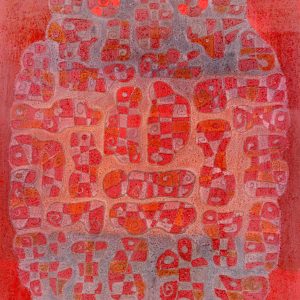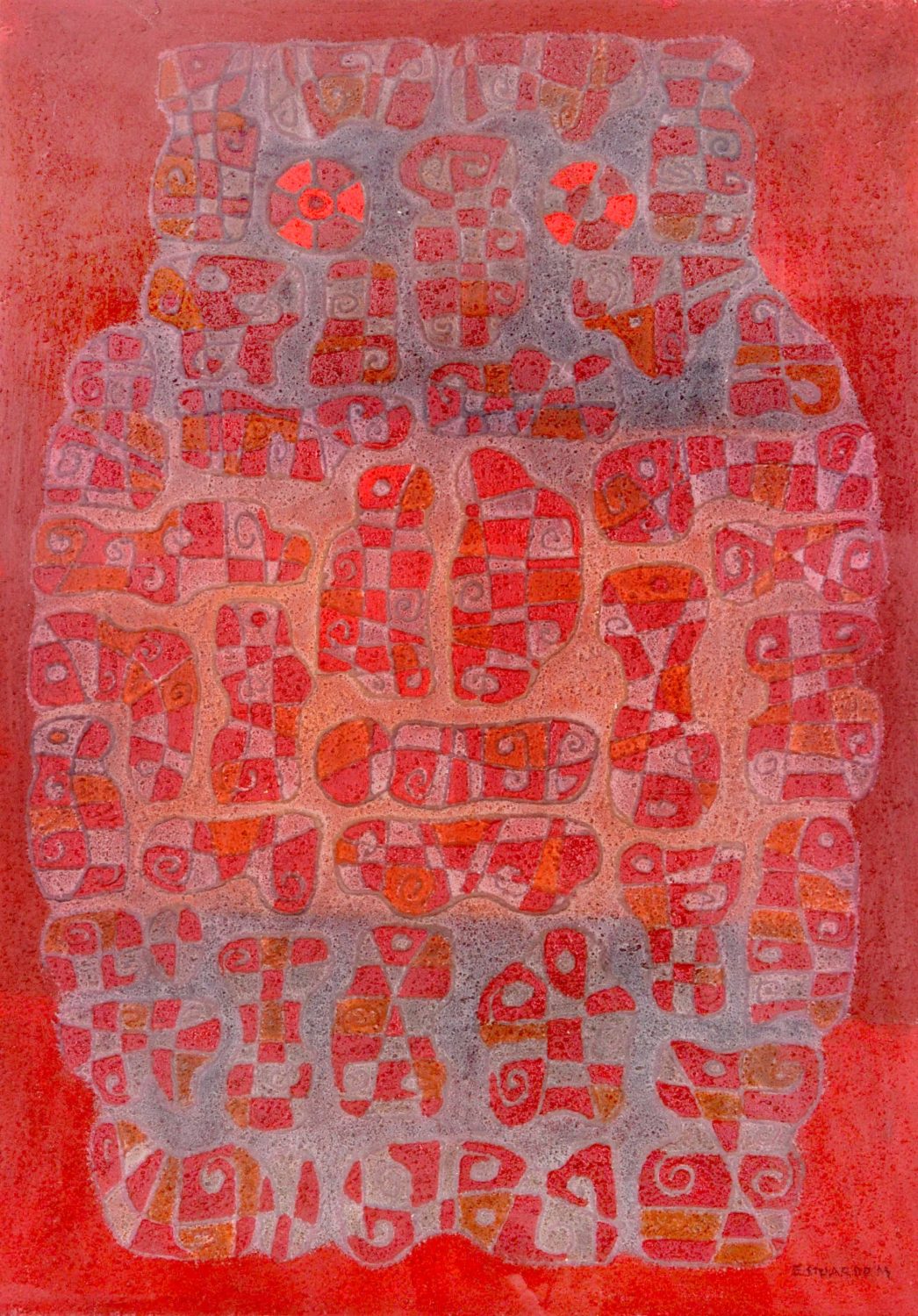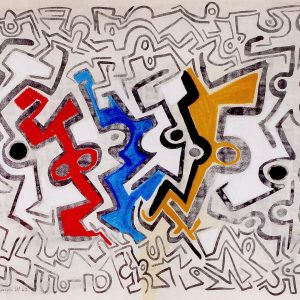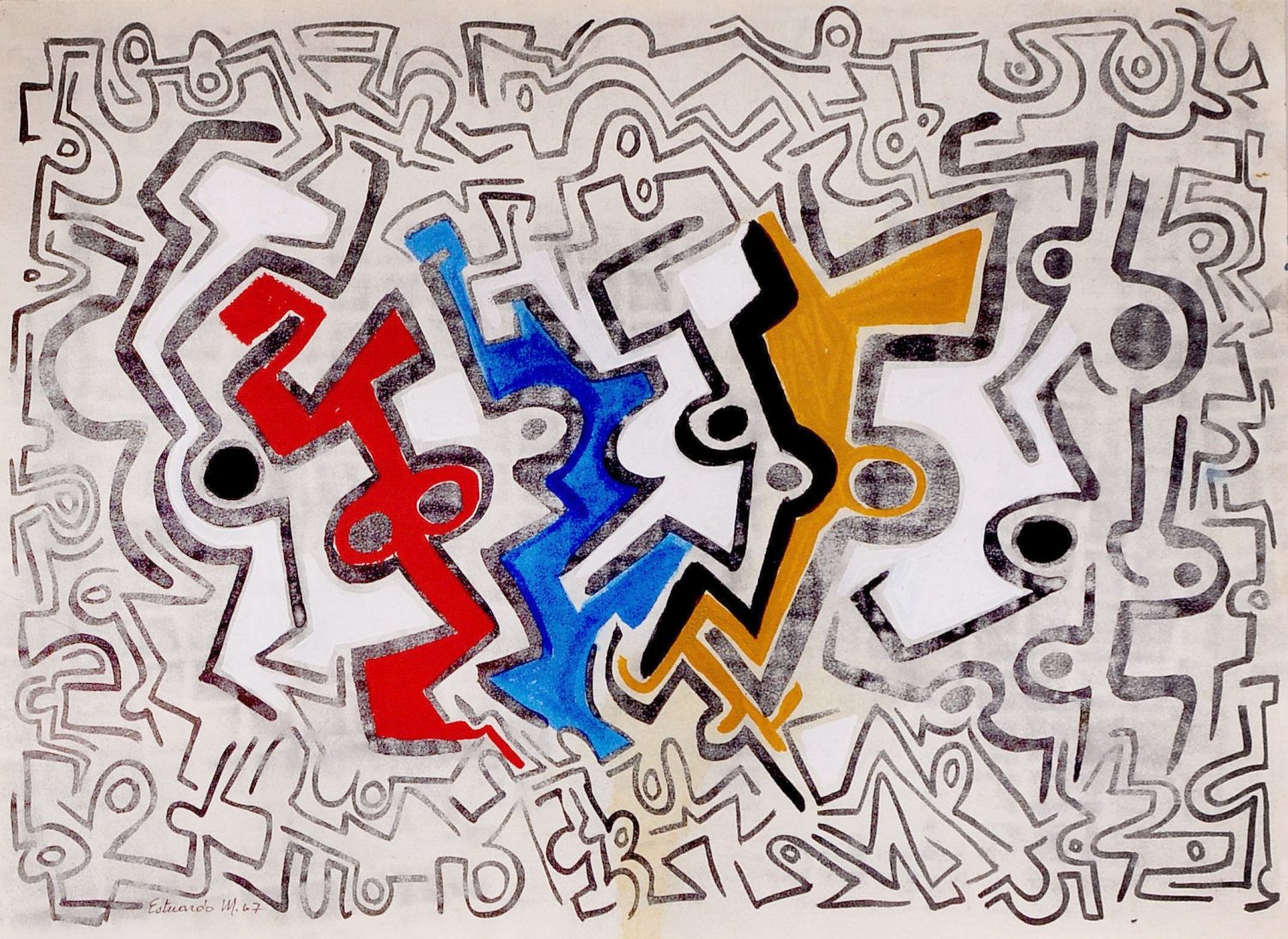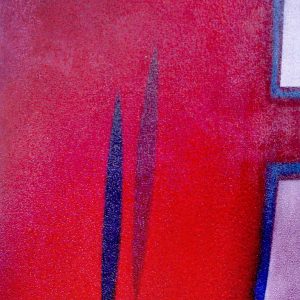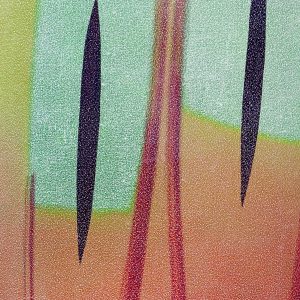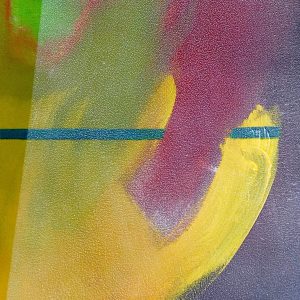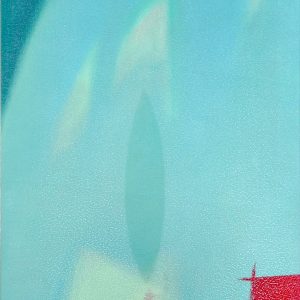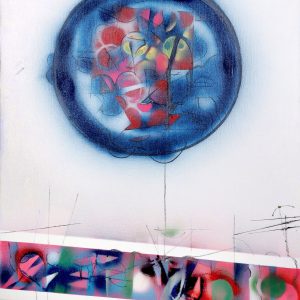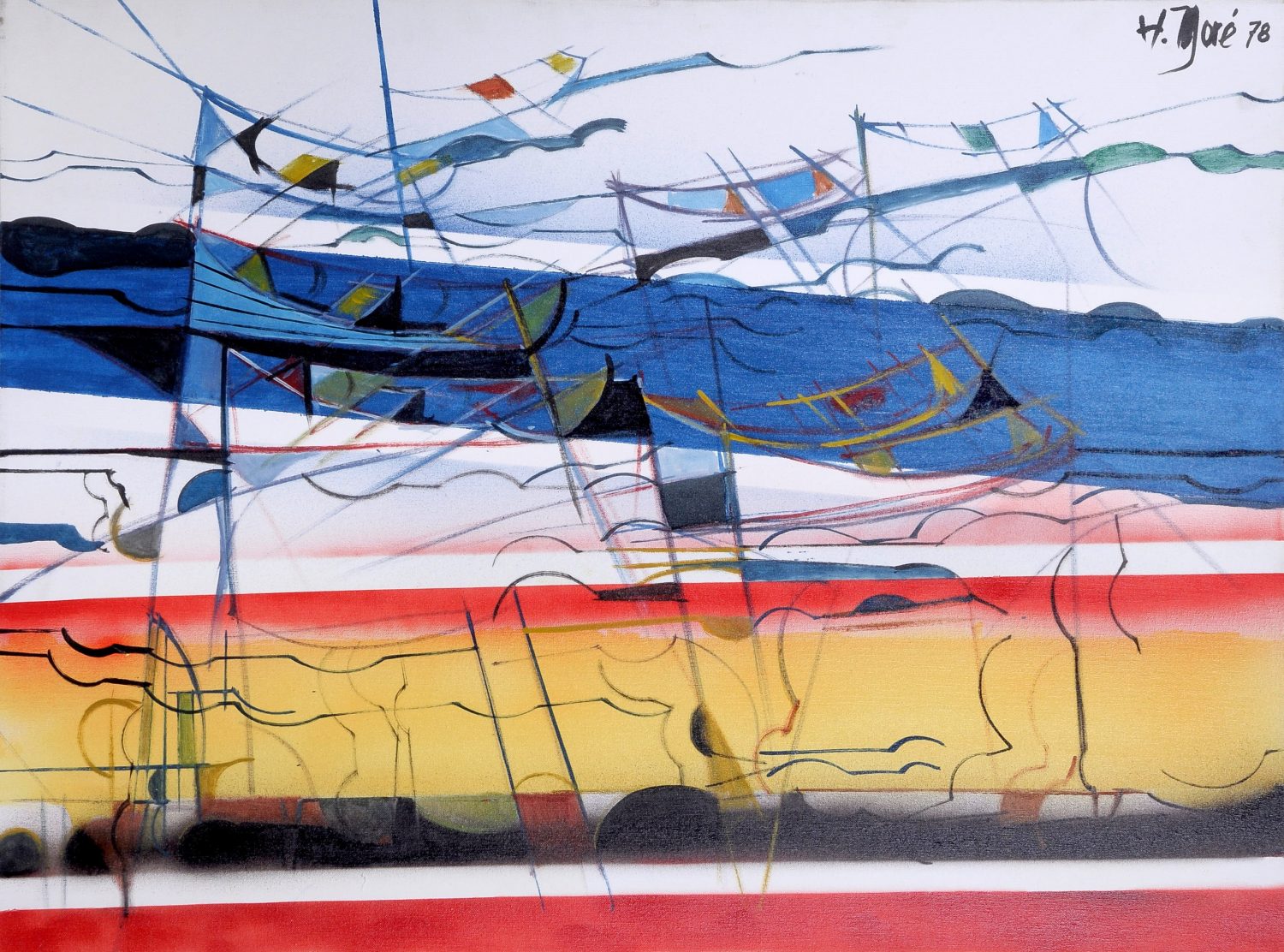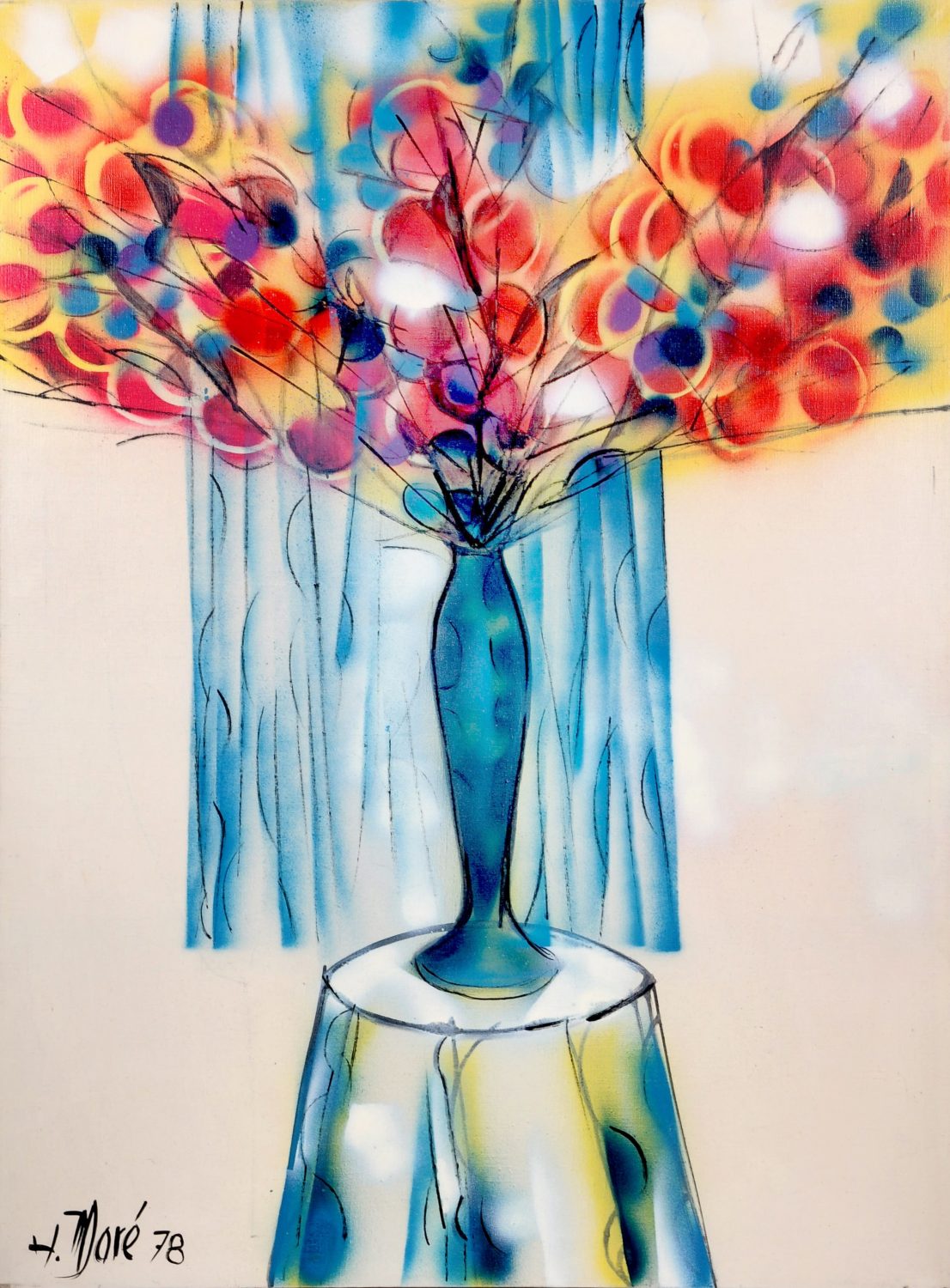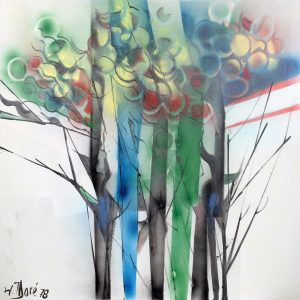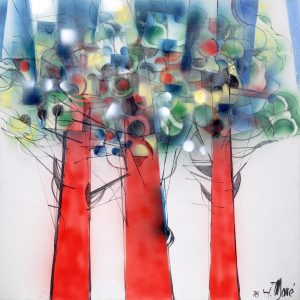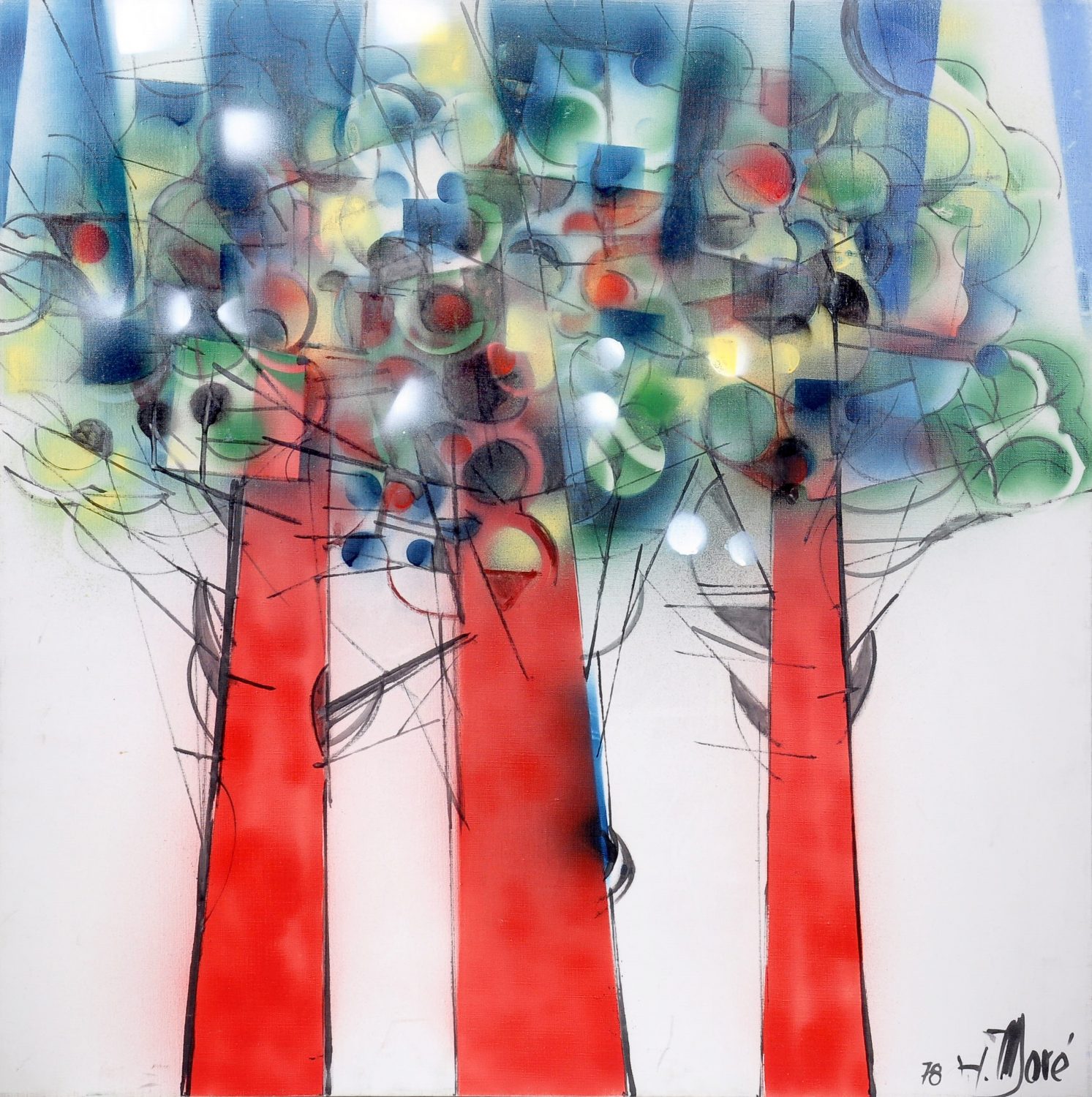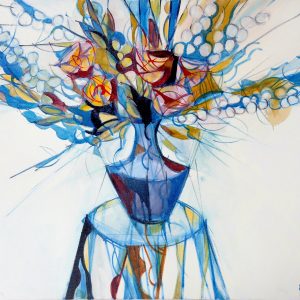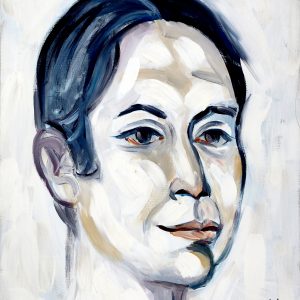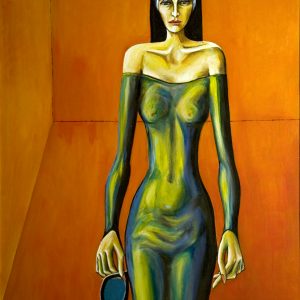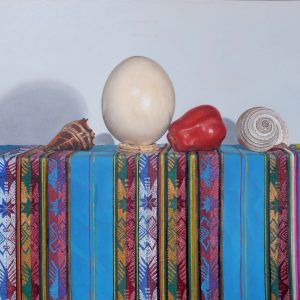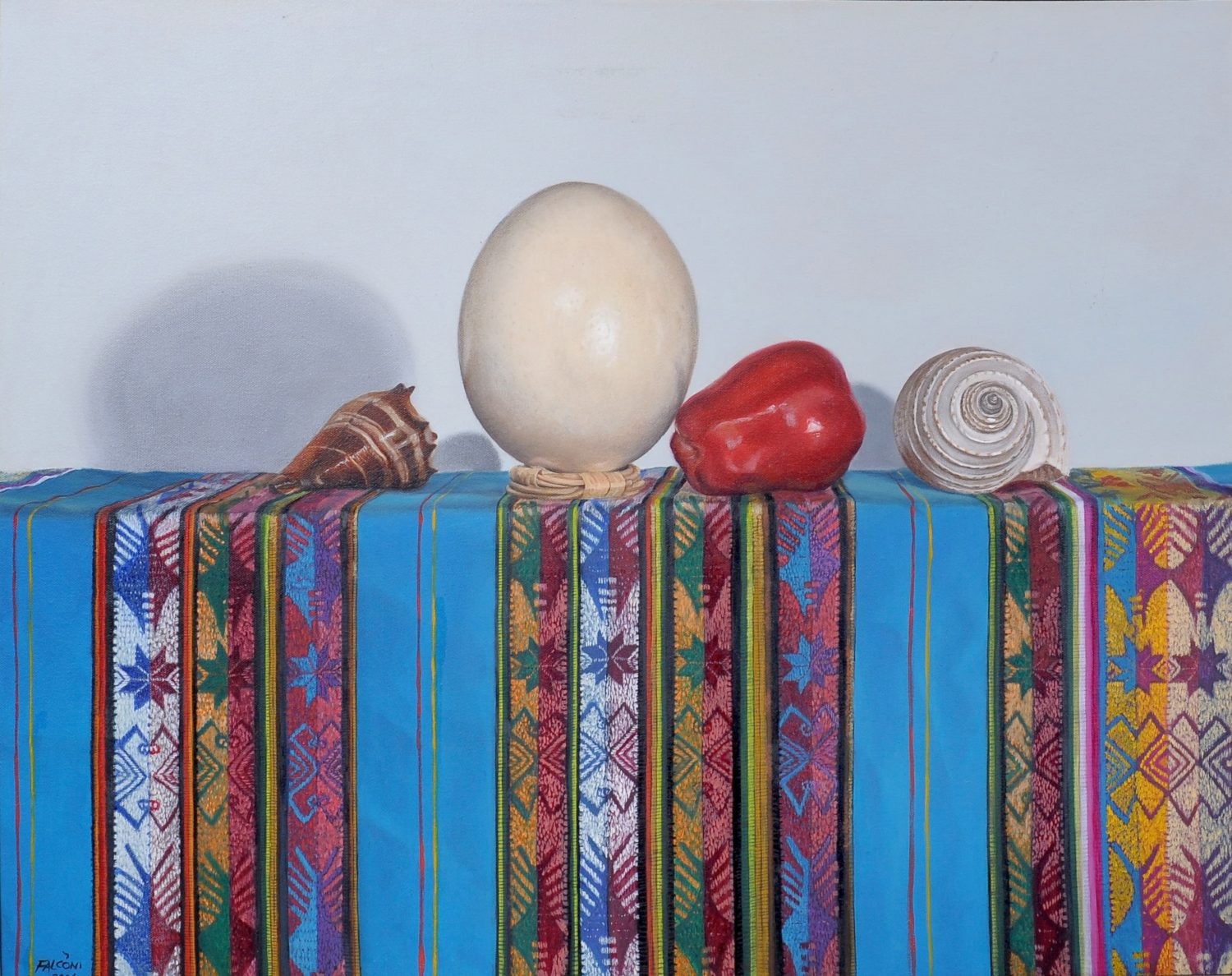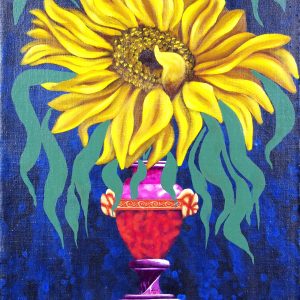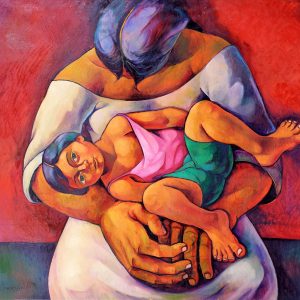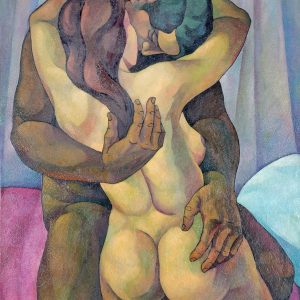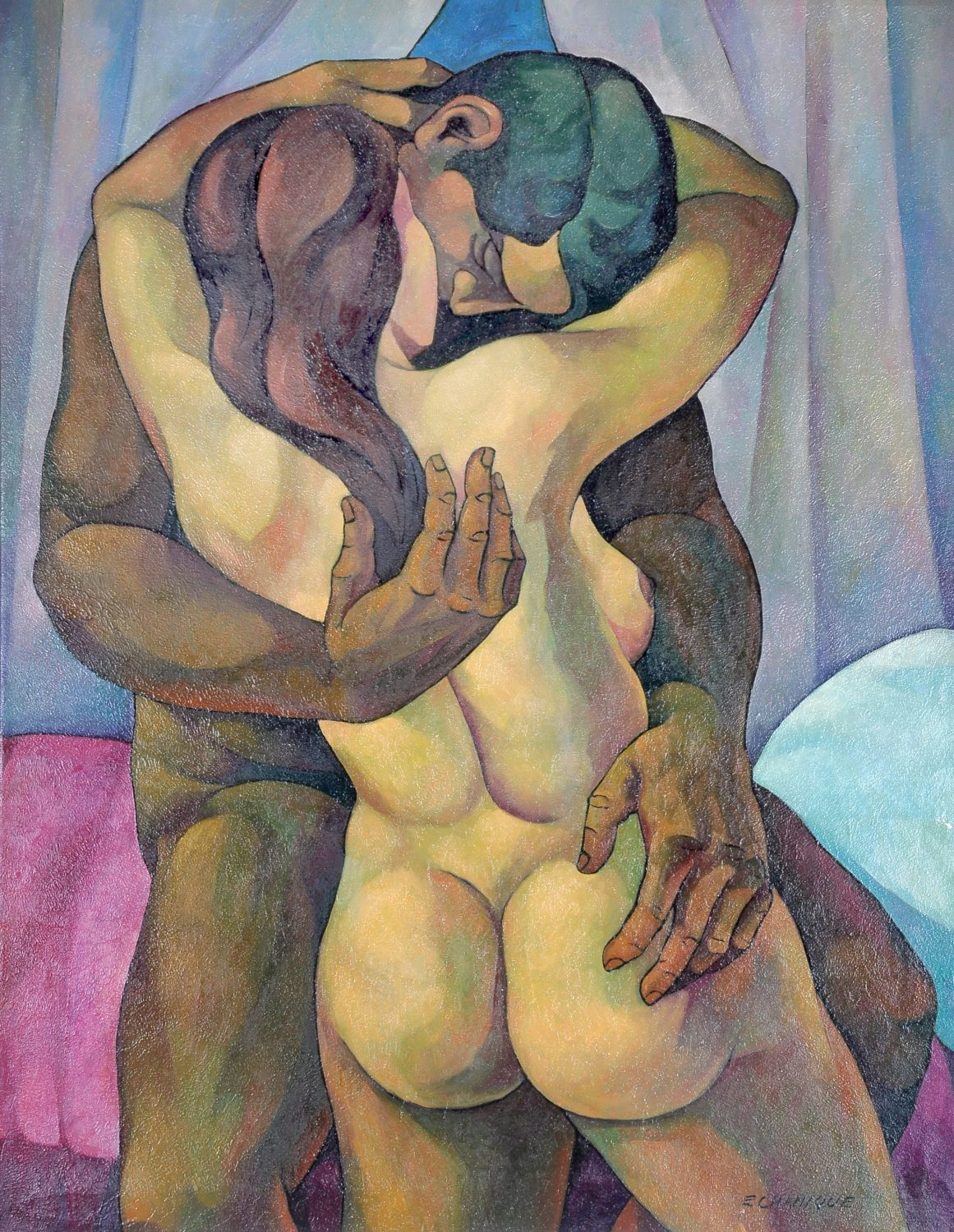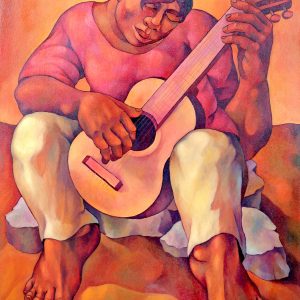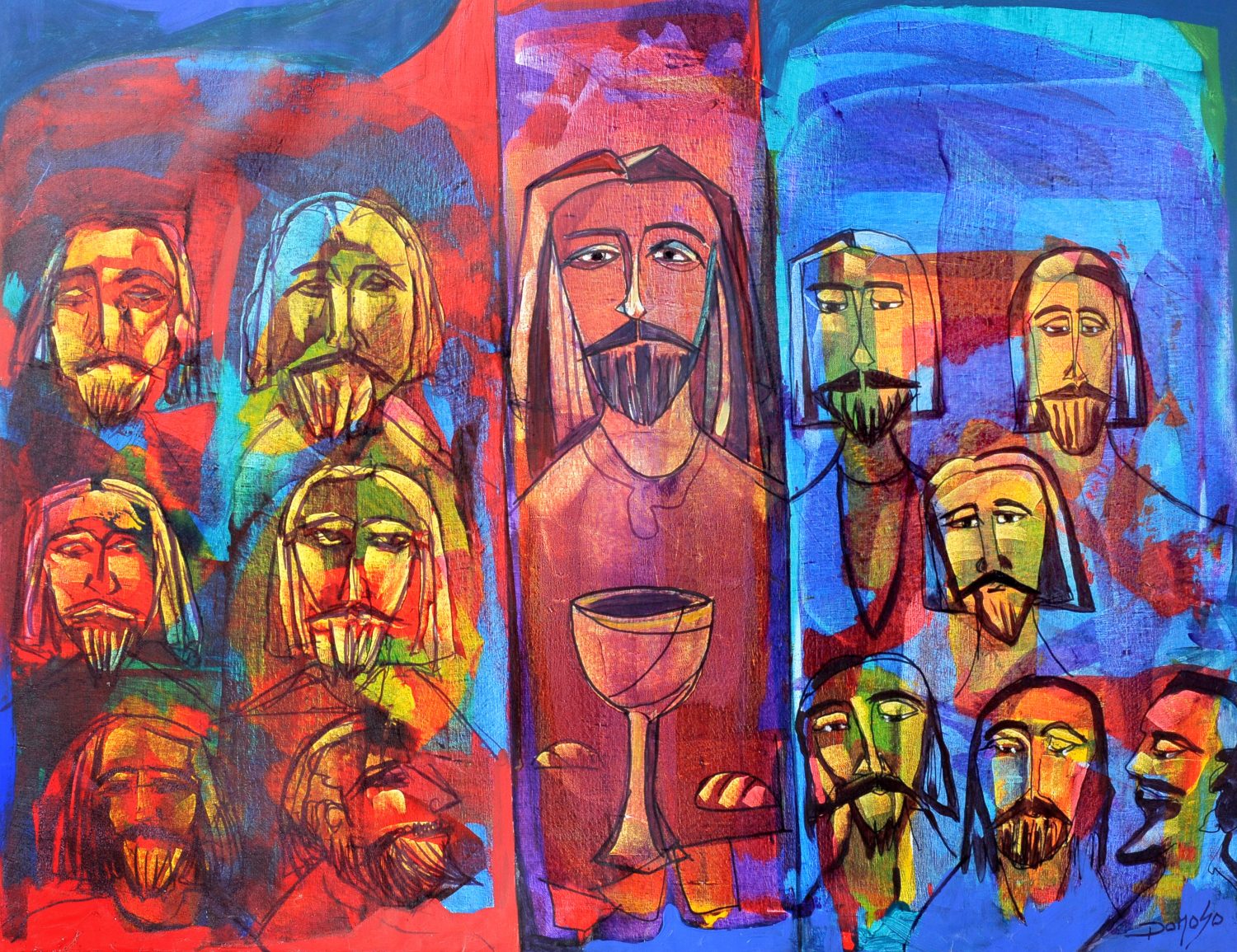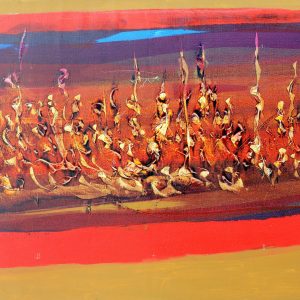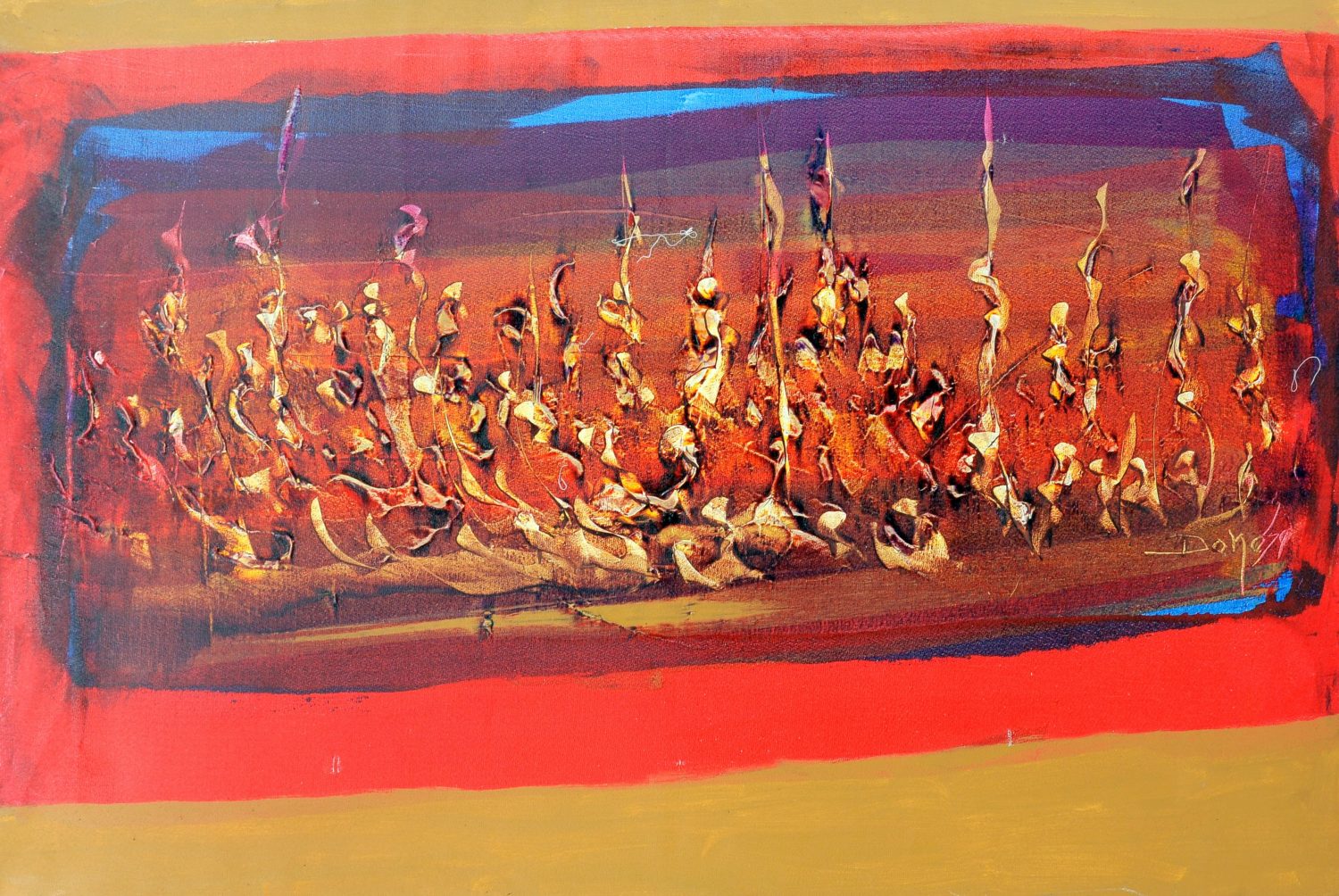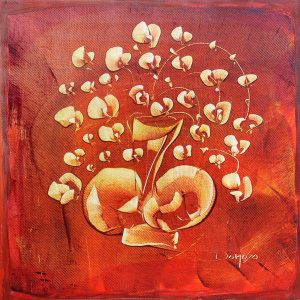I was first introduced to Jaime Andrade in 1991, by Aida Gonzalez, then-director of cultural affairs for the Borough of Queens, in the course of planning our exhibition Ecuador: Arte y Tradicin, to which Jaime was a generous lender. That meeting has led to a close and collegial relationship that now spans two decades, during which time I have developed an ever-deepening appreciation for Jaime’s elegant presence, his discerning eye, his generosity, and his profound dedication to art and artists. Queensborough Community College Art Gallery is most pleased to honor Jaime with this exhibition.
Born in 1931 in Otavalo, Ecuador, a city known for its arts and crafts, Jaime Rodrigo Andrade-Vargas was one of eleven children of Teresa Vargas and Alberto Andrade. He attended the Central University in Quito, wherein in 1958 he received a degree in Education and Social Sciences. Before emigrating to the United States in 1962, he held governmental jobs in Quito and Bogot, Colombia. His first job in New York was as a teacher of Spanish grammar at Riverside Church.
In Bogot, Jaime met the sculptor dgar Negret, and shared with him his intention to go to the United States. Negret gave him an introduction to his dealer in New York, David Herbert (1920-1995). That meeting would change the course of Jaime’s life, and lead to a friendship that lasted until Herbert’s death in 1995.
In 1963, not long after his arrival in New York, Jaime began working as Herbert’s assistant at the Feigen-Herbert Gallery on East 81st Street. His years of work with Herbert, of whom Frank O Hara wrote in 1959, “I have the greatest admiration for his enthusiasm, knowledge, and judgment in all artistic matters, constituted a uniquely well-rounded education and apprenticeship in contemporary art.” In about 1964, Jaime and Herbert also established together a private gallery in Jaime’s apartment on East 70th Street, where informal exhibitions were presented, with sought-after, invitation-only, salon openings. Jaime would later accompany David, briefly, when he became a director at Graham Gallery in 1967, but he went on to work for Lawrence Rubin Gallery (from 1967 to 71) at the recommendation of John Bernard Myers; and when Rubin became director of Knoedler & Company, Jaime went there with him, beginning as his assistant. After forty years, he is still with Knoedler, where he is now a Senior Associate. His contribution to the gallery has been inestimable, and multi-faceted many a collector has become a Knoedler client through his skillful ambassadorial efforts, and visitors from around the world make a regular pilgrimage to Knoedler especially to seek him out. In 2004, the gallery honored Jaime’s long career in the arts with a celebration, held in conjunction with the special loan exhibition, Lois Orswell, David Smith, and Friends: Works from the Lois Orswell Collection, Harvard University, an exhibition which came about through Jaime’s initiative. Newly discovered archival information and photographs, from David Herbert’s archive, were included in the exhibition catalog, which also honored Jaime.
Jaime’s mentor, David Herbert had, as a young man, worked for the legendary dealers Betty Parsons (1951-1953) and Sidney Janis (1952-1959); hence, his connections to both artists and collectors were deep and varied and included the first-generation Abstract Expressionists Franz Kline, Robert Motherwell, Jackson Pollock, Mark Rothko, David Smith, and Clyfford Still, each of whom showed with Parsons and/or Janis while Herbert was there. At Janis, Herbert was known, in particular, as a salesman of New York School artists. It was from Herbert, for instance, that the collector Richard Brown Baker (1912-2002) acquired his two monumental canvases, Pollock’s Arabesque, 1948, and Kline’s Wanamaker Block, 1955, both later given to Yale University Art Gallery.
In his first years as an independent dealer, beginning in 1959, Herbert in some cases in cooperation with his close colleagues Irving Blum and Walter Hopps in Los Angeles, and Robert Fraser in London was also a significant force in helping to launch the careers of a number of artists, including Ellsworth Kelly, Louis Nevelson, William Scharf, Leon Polk Smith, Andy Warhol, and Jack Youngerman. Herbert’s clients included Lois Orswell, whose entire collection was bequeathed in 1998 to Harvard University Art Museums, and also Ernst Beyeler, Ben Heller, G. David Thompson, and Richard Brown Baker.
As a collector, Richard Brown Baker remained committed to focusing on living, younger, and less established artists, and, from 1964 to 1998, he came to rely on Jaime, whom he had met through Herbert, not only as a trusted friend but as his curator, often following Jaime’s leads in locating works for his collection. Baker’s very last acquisition, a work on paper by Michael Heizer, was from Knoedler in February 1998, in consultation with Jaime. Over a period of many years, they were also frequent traveling companions on cultural cruises organized by the Smithsonian Institution and National Geographic Society the last trip to Russia in 1997.
It was Jaime’s destiny to be sought out as a companion and assistant by other art world figures, as well, including two whom he met through Herbert: photographer Adelaide de Menil, with whom Jaime traveled on an expedition to Alaska and British Columbia in preparation for her 1971 book Out of Silence (with text by William Reid); and the painter William Draper (1912-2003), with whom Jaime also developed a lifelong friendship.
Along with all the exposure Jaime had during the 1960s, and thereafter, to the mainstream of New York’s art world, it was, interestingly, also through Herbert that he first developed an enduring appreciation for contemporary Latin American art. Through contact with Jos Gmez-Sicre (1916-1991), Chief of the Visual Arts Unit of the Pan-American Union from 1948 to 1976, Herbert had become interested in exhibiting Spanish and Latin American artists, including his friend and Jaime’s, the Spaniard, Angel Ponce de Leon (b. 1925); the British-born Mexican, Leonora Carrington (b. 1917); and also Alfonso Ossorio (b. 1916), who, while born in the Philippines, retained strong connections to other Spanish-language artists and collectors. In 1961, Herbert presented a group exhibition, Spanish and Latin-American Artists; included were the Colombians, dgar Negret (b. 1920) and Eduardo Ramirez (b. 1923); the Chilean, Enrique Castro-Cid (b. 1938); the Mexican, Jos Luis Cuevas (b. 1934); the Guatemalan, Rodolfo Abularach (b. 1933); and the Dominican, Antonio Toribio (b. 1924). Herbert’s active involvement with the Art Lending Service of The Museum of Modern Art included the circulation of works by several of those artists.
When, in about 1964, Jaime began modestly to form his own collection, his taste turned, in particular, to pre-Columbian art and also to contemporary Spanish and Latin American art, especially the art of Ecuador. One might say, as with many dedicated collectors, that his collection formed around his contact with and appreciation for the artists themselves. The Pan-American Union regularly sent visiting Latin American artists to Herbert and Jaime, who assumed the status of unofficial cultural liaisons in New York. Both were forthcoming in facilitating contact with galleries and collectors and even in effecting private sales.
Among the first Ecuadorian artists Jaime met and collected were Felix Arauz (b. 1935), Estuardo Maldonado (b. 1930), Luis Enrique Tbara (b. 1930), Manuel Ugarte (b. 1945), and Manuel Velastegu (b. 1946). He has since encouraged and supported the careers of three generations of Ecuadorians, many of whom he has collected in-depth. And his collection includes not a few works that were given to him over the years, in gratitude for his help and support.
Jaime is now widely acknowledged as a veritable ambassador of Ecuadorian culture, and in 2010 was presented the Fondation Gonzalo Rubio Award by the Instituto Otavale de Antropologa for his contribution to the diffusion of Ecuadorian culture. Not only has he been the cultural host to generations of Ecuadorians visiting New York, but he has also gone to great lengths to host Americans in Ecuador, including multiple visits by David Herbert, William Draper, Richard Brown Baker, the artist Reeve Schley, and others, all of whom, as a result, developed a deep appreciation for Ecuador and its culture. William Draper also documented his trips with an extensive series of paintings and sketches of the Otavalo landscape particularly the Andrade family farm, La Magdalena, all of which were left to Jaime when the painter died in 2003. In 2010, in cooperation with QCC Art Gallery, Jaime organized an exhibition of twenty-five of Draper’s Ecuador paintings, which was presented at the Casa de la Cultura Ecuatoriana in Ibarra.
Jaime’s legendary generosity extends to institutional munificence. Artworks from his collection have been exhibited worldwide. Major pre-Columbian artifacts from his collection were included in the 1997 exhibition, Prehispanic America Time and Culture (2000 BC to 1550 AD), at the Auditorio de Galicia, Santiago de Compostela, Spain. In 1991, Jaime was a lender to Ecuador: Arte y Tradicin, at QCC Art Gallery; and in 1998, works from his collection was included in Zero Latitude: Contemporary Ecuadorian Artists, the first of a series of exhibitions on the art of Ecuador at New Jersey City University. He has donated paintings by Hugo Bastidas to the Gyeongnam Art Museum, Korea; to the Museo del Barrio, New York; and to Rogers University, Newark, New Jersey. Since 1997, he has been a donor of works by contemporary Latin American artists, as well as pre-Columbian art, to QCC Art Gallery. As executor of the Estate of David Herbert, he has made important gifts of archival documents to Harvard University Art Museums; the Archives of American Art, the Smithsonian Institution; and to Queensborough Community College. A permanent installation of the QCC Art Gallery’s Pre-Columbian Collection is planned, to be installed in a space dedicated to The Jaime Andrade Pre-Columbian Collection.
More than a life in art, one may say of Jaime Andrade that he has lived a life truly for art. We are profoundly grateful to Jaime for the present exhibition and for his singular role as a steadfast friend and benefactor of Queensborough Community College Art Gallery.

